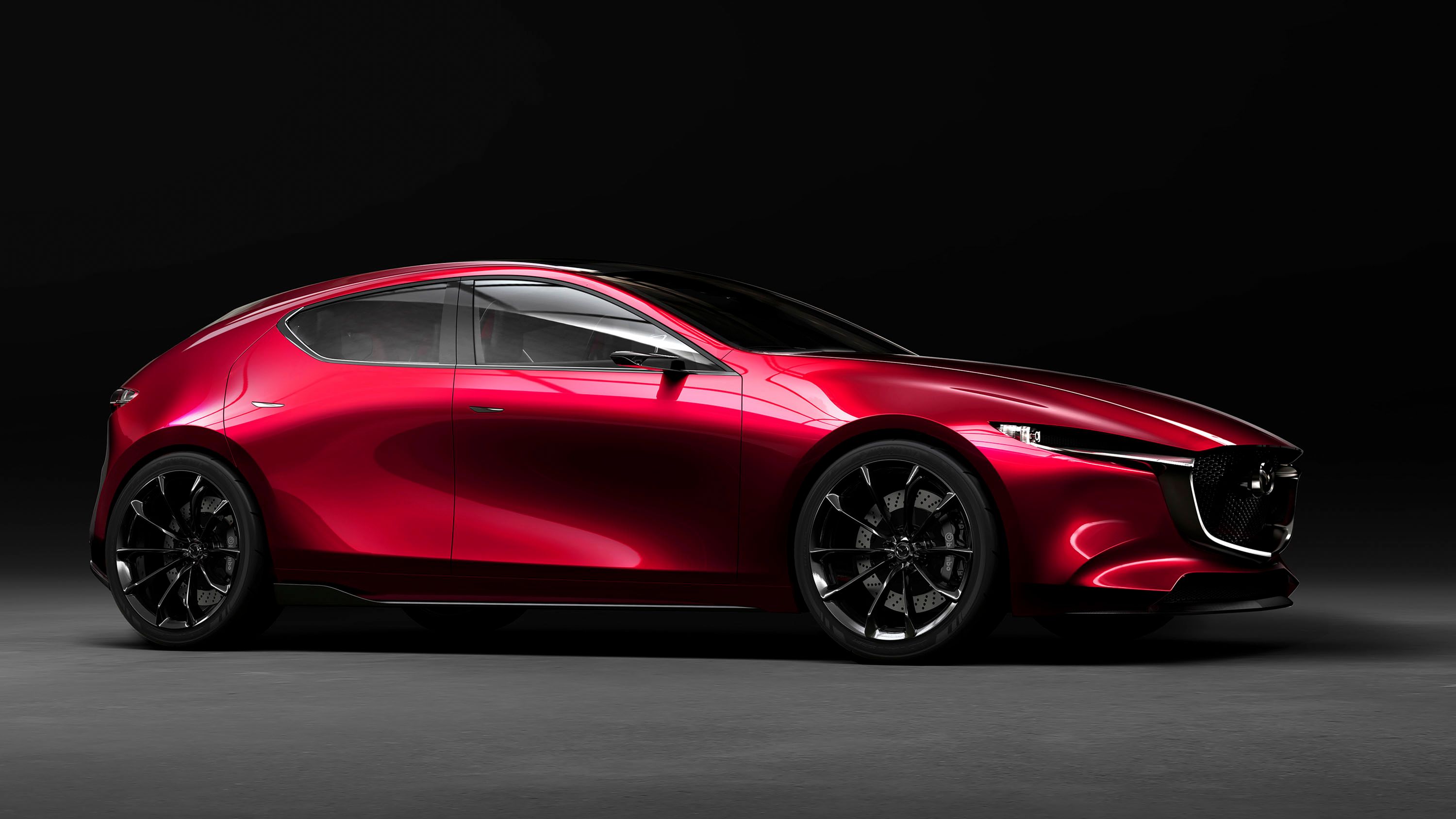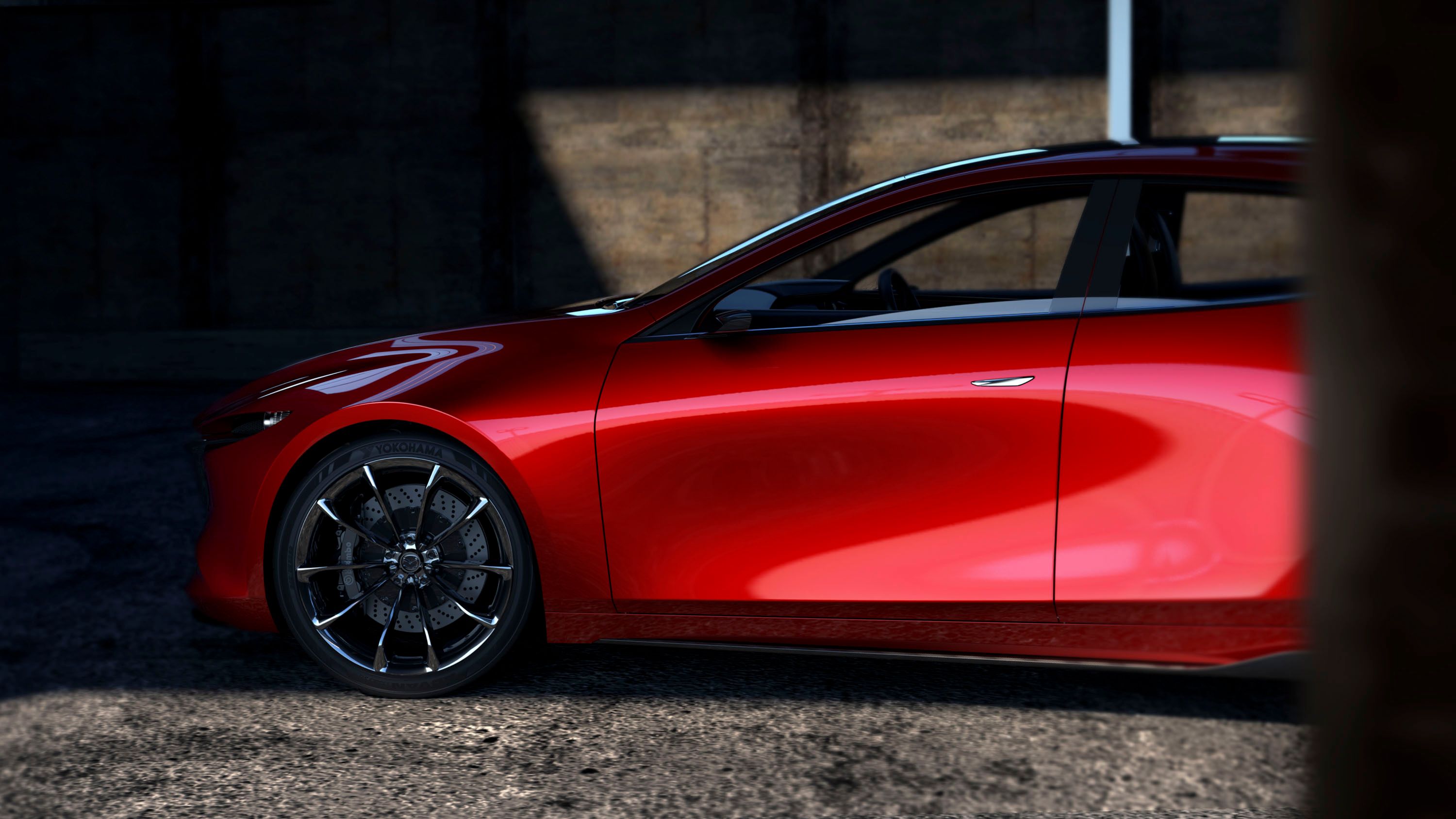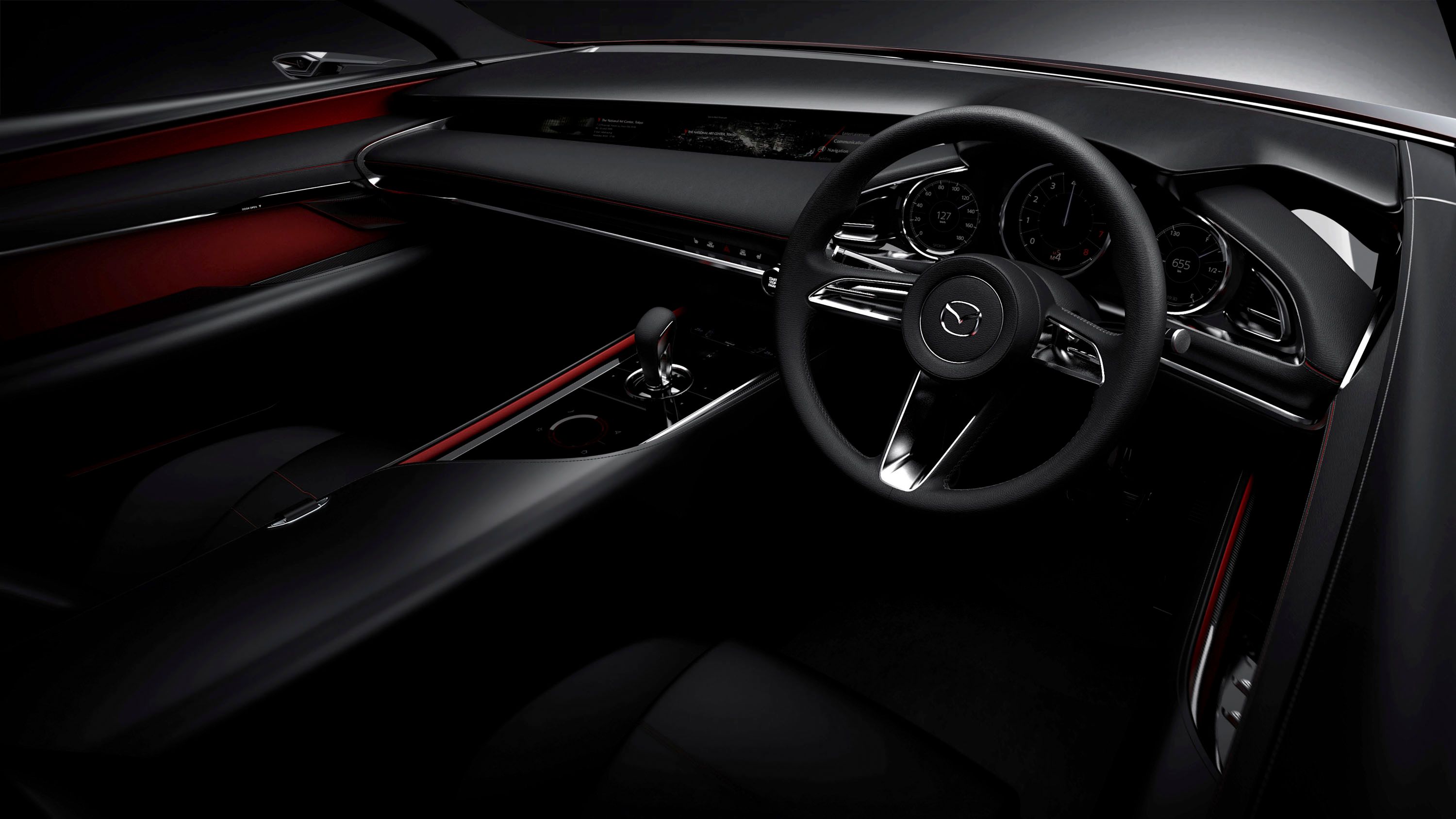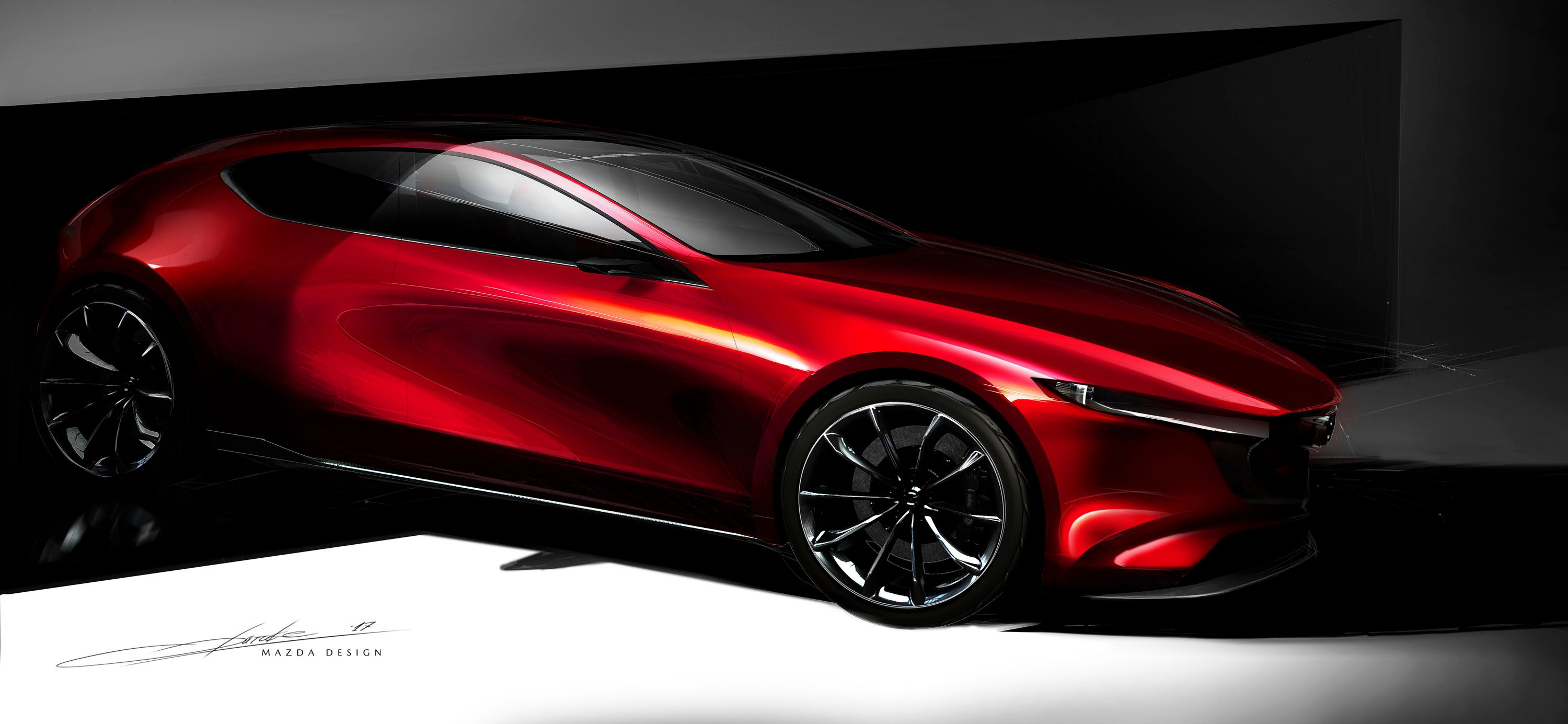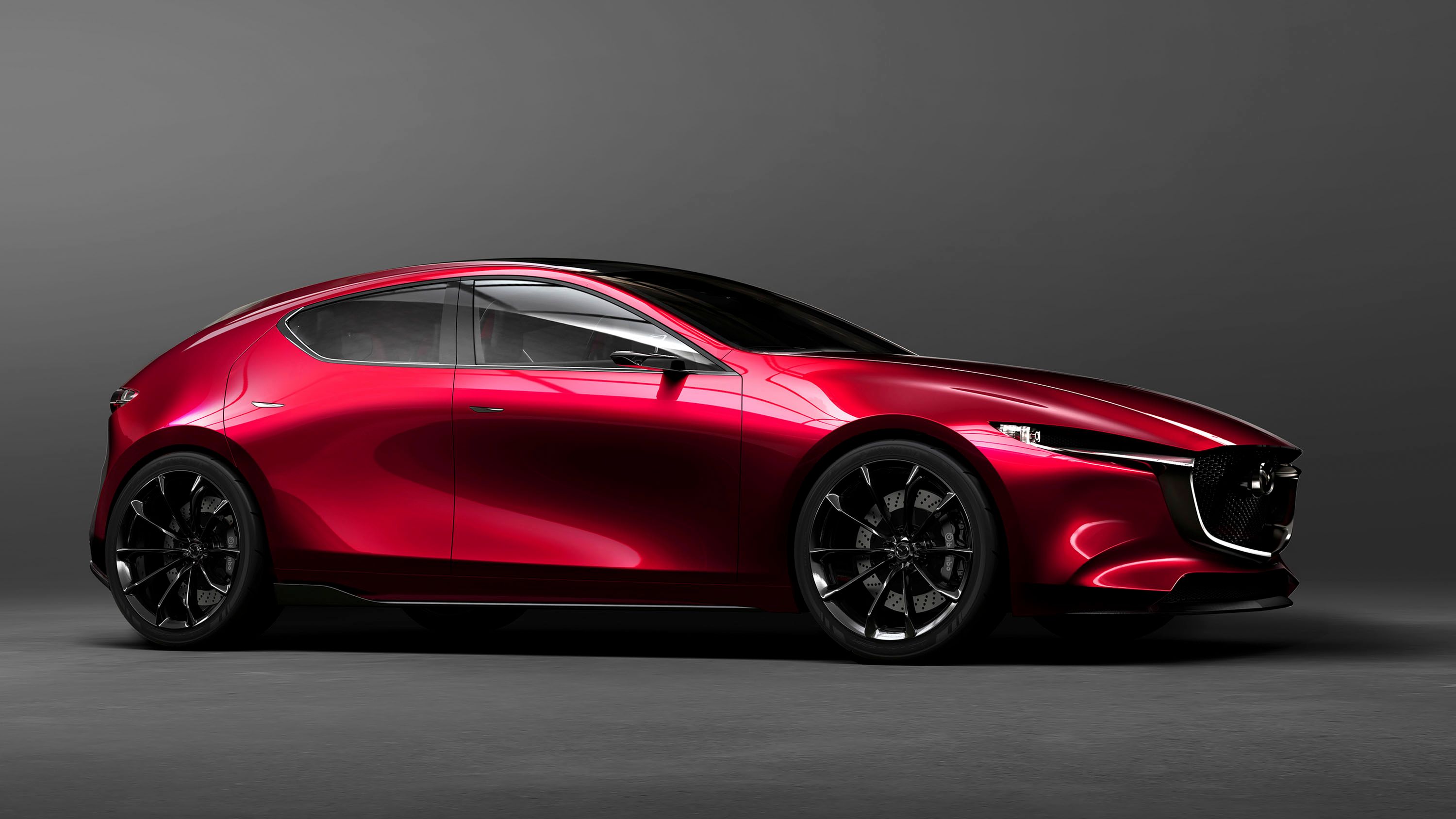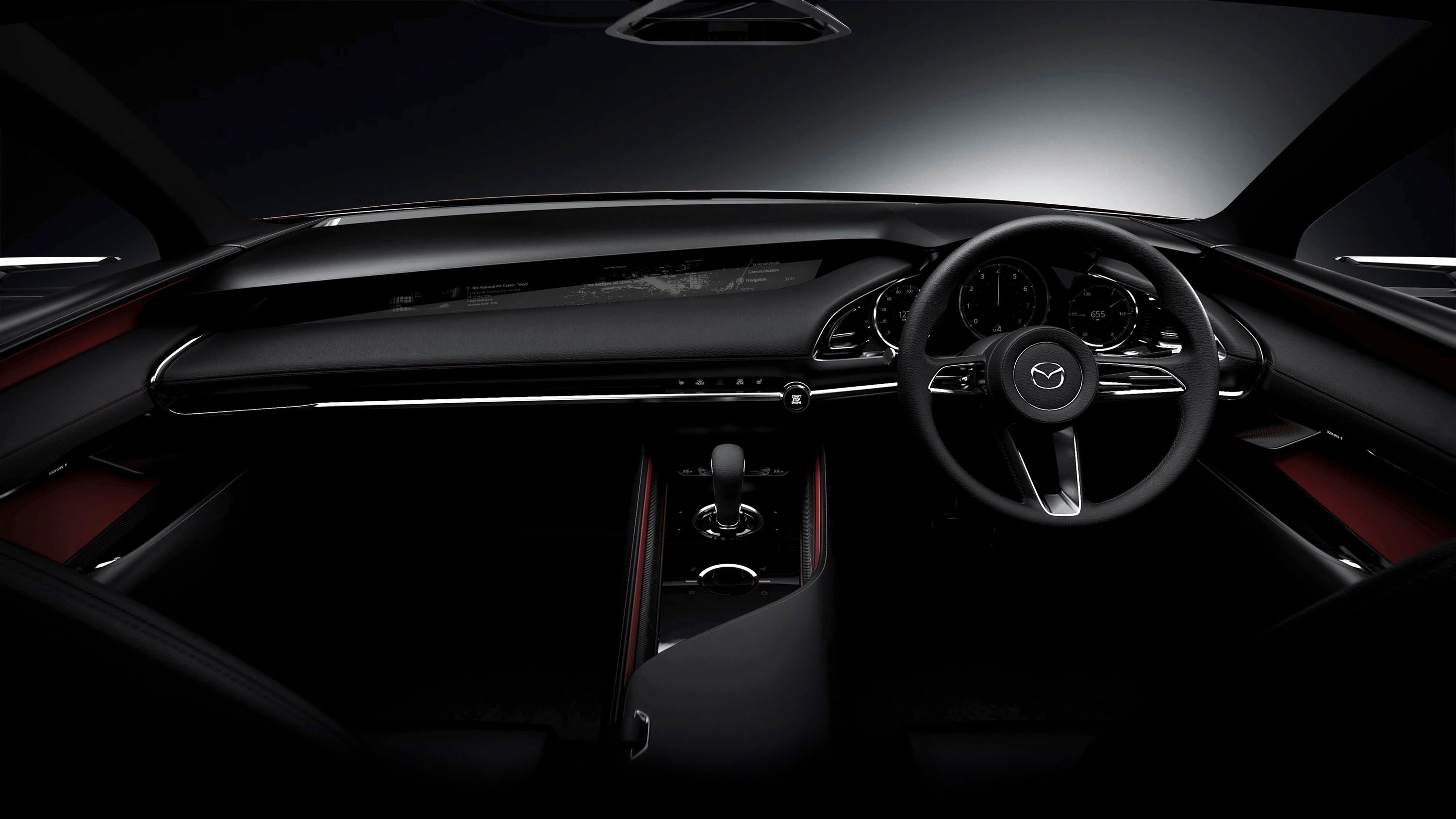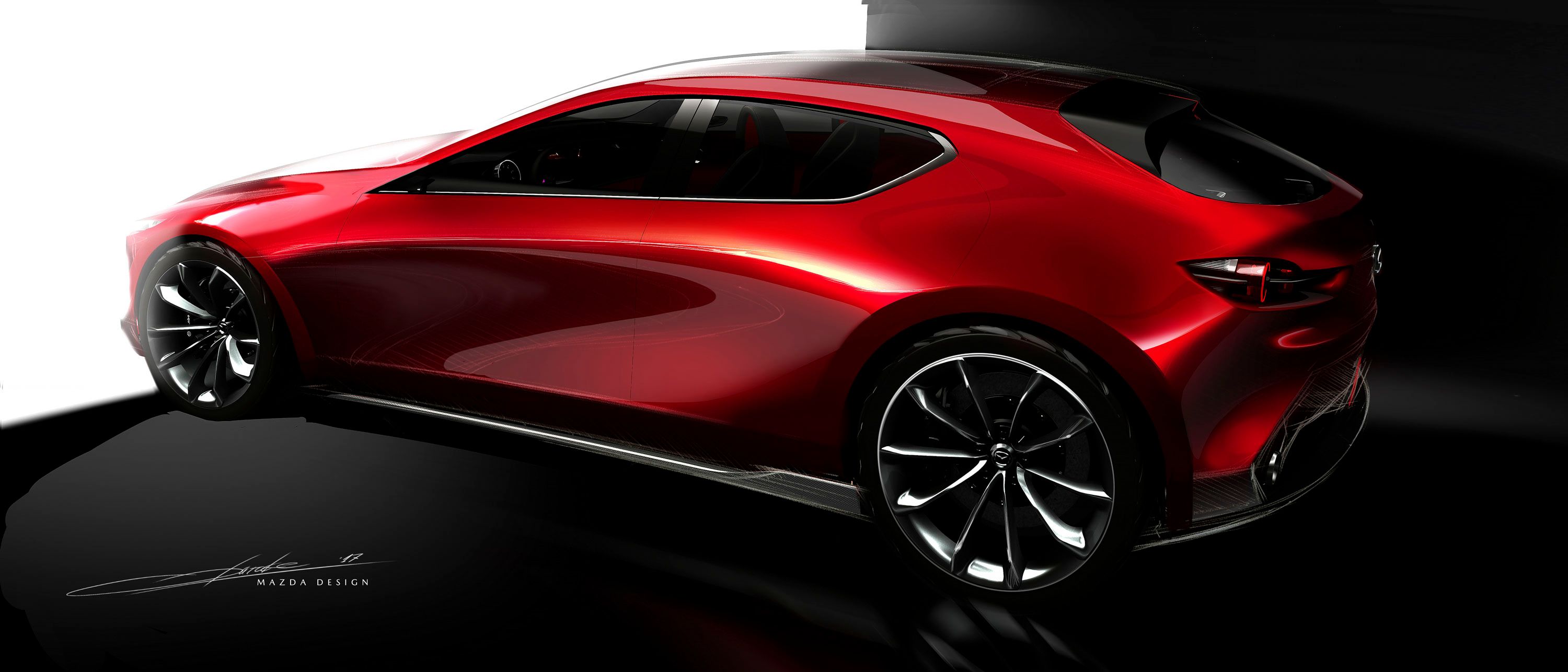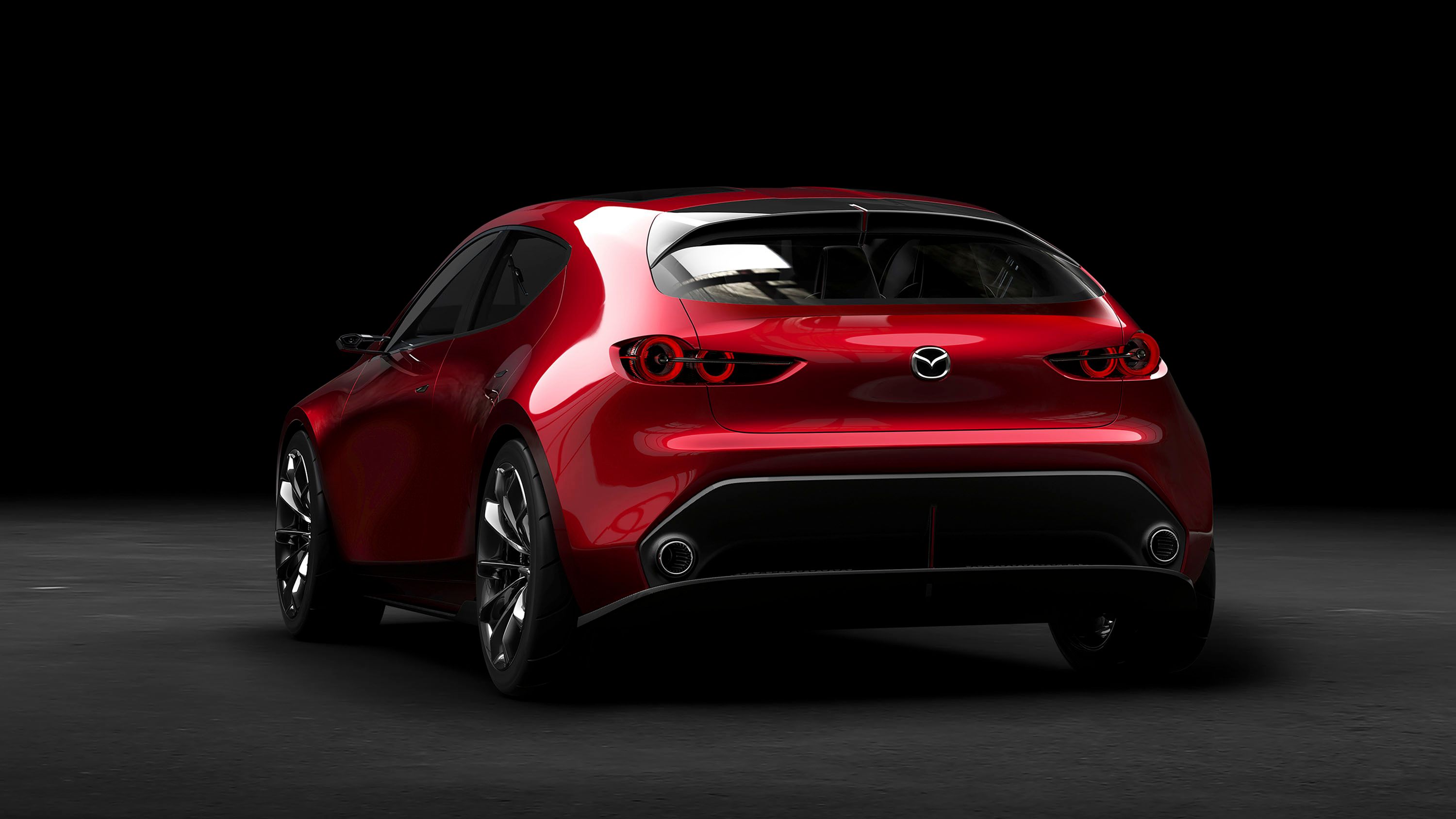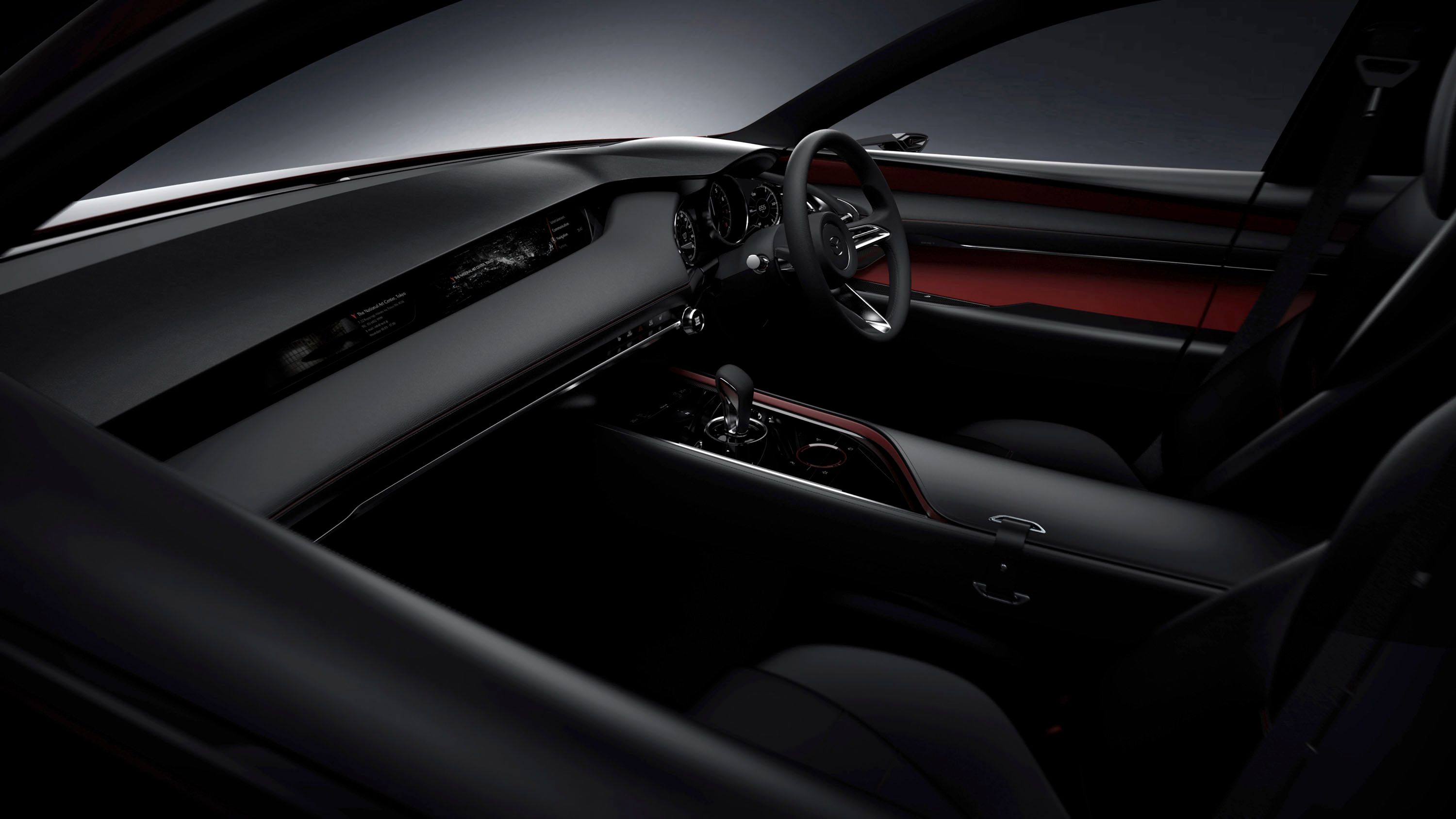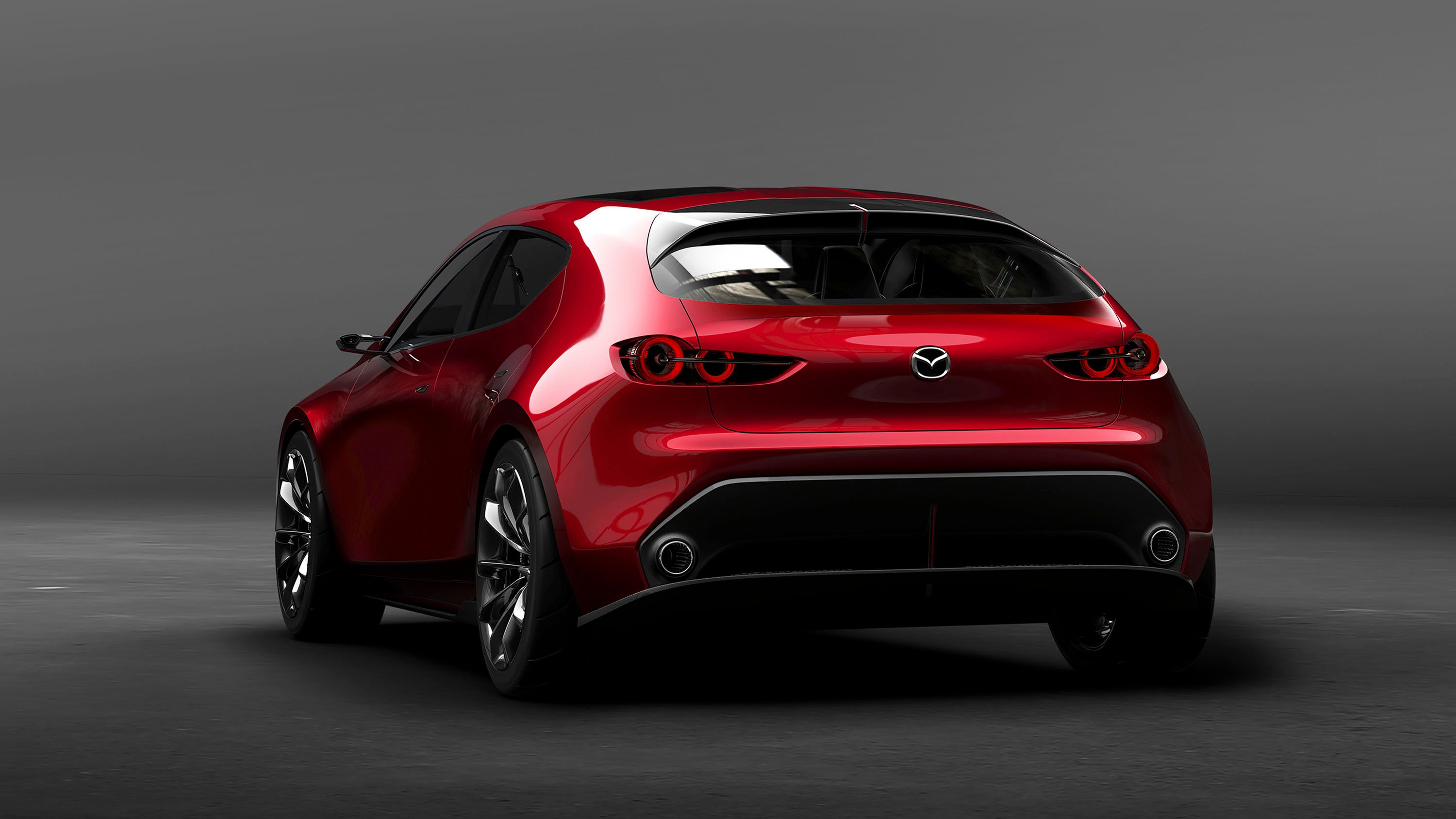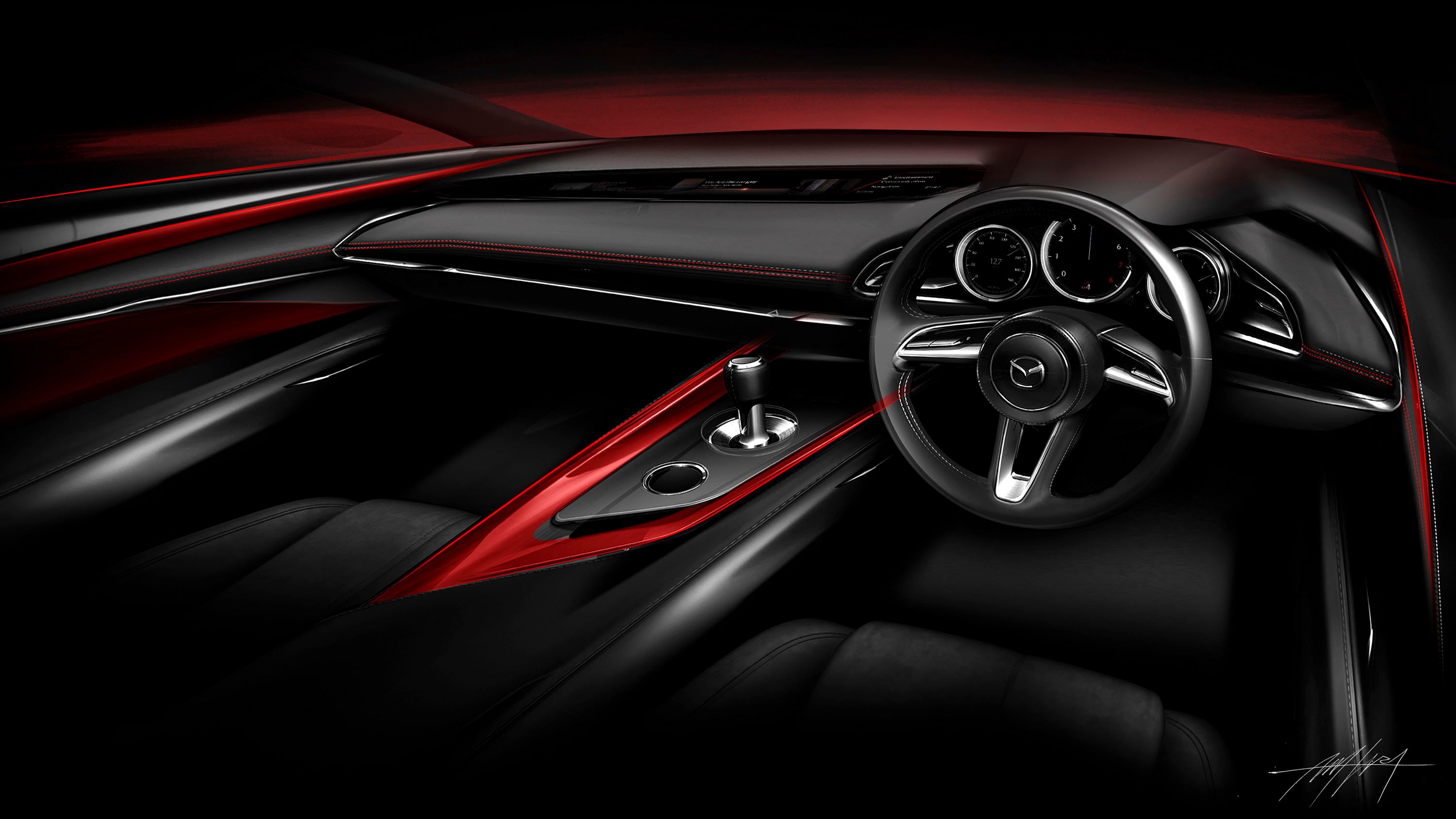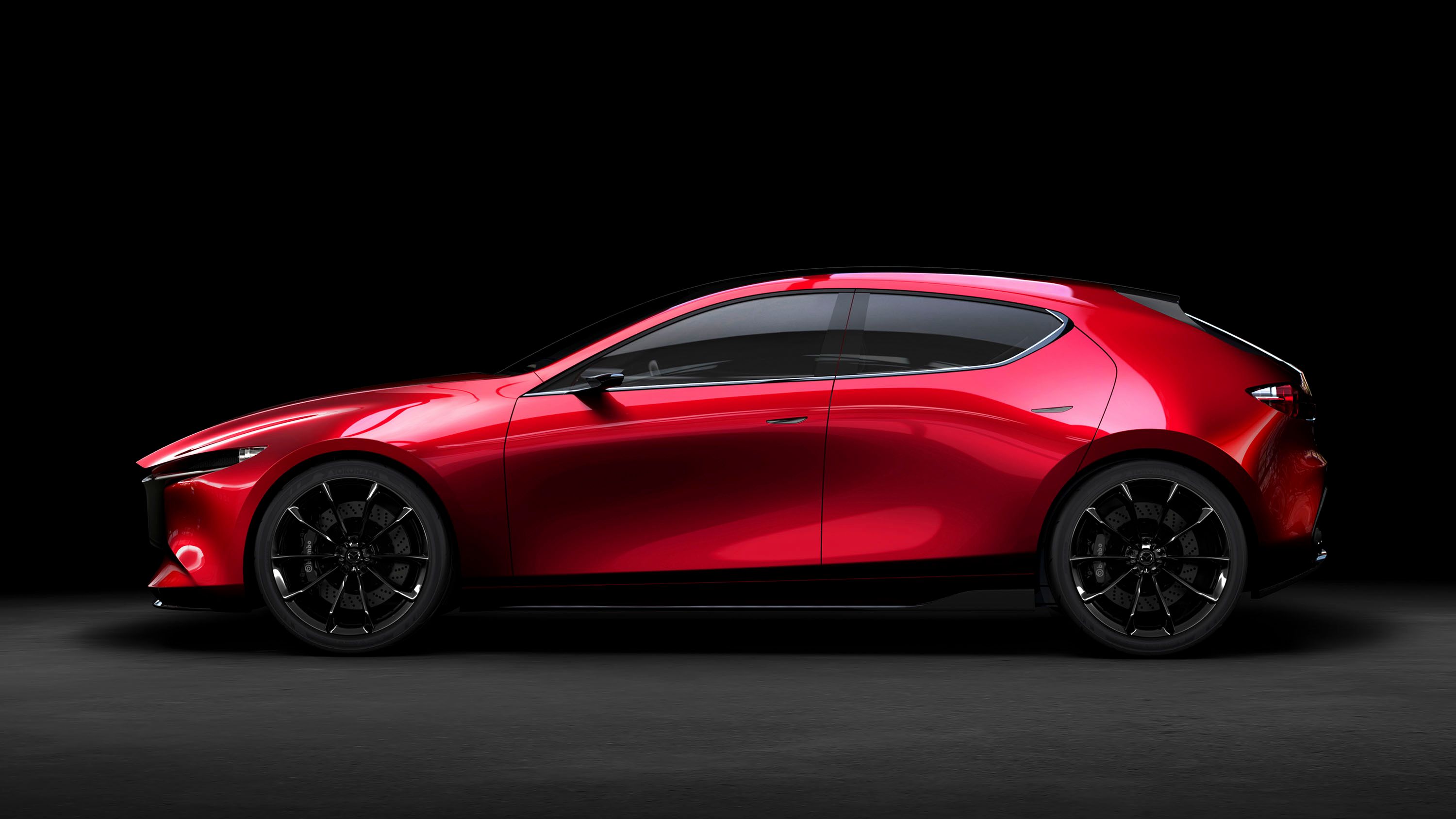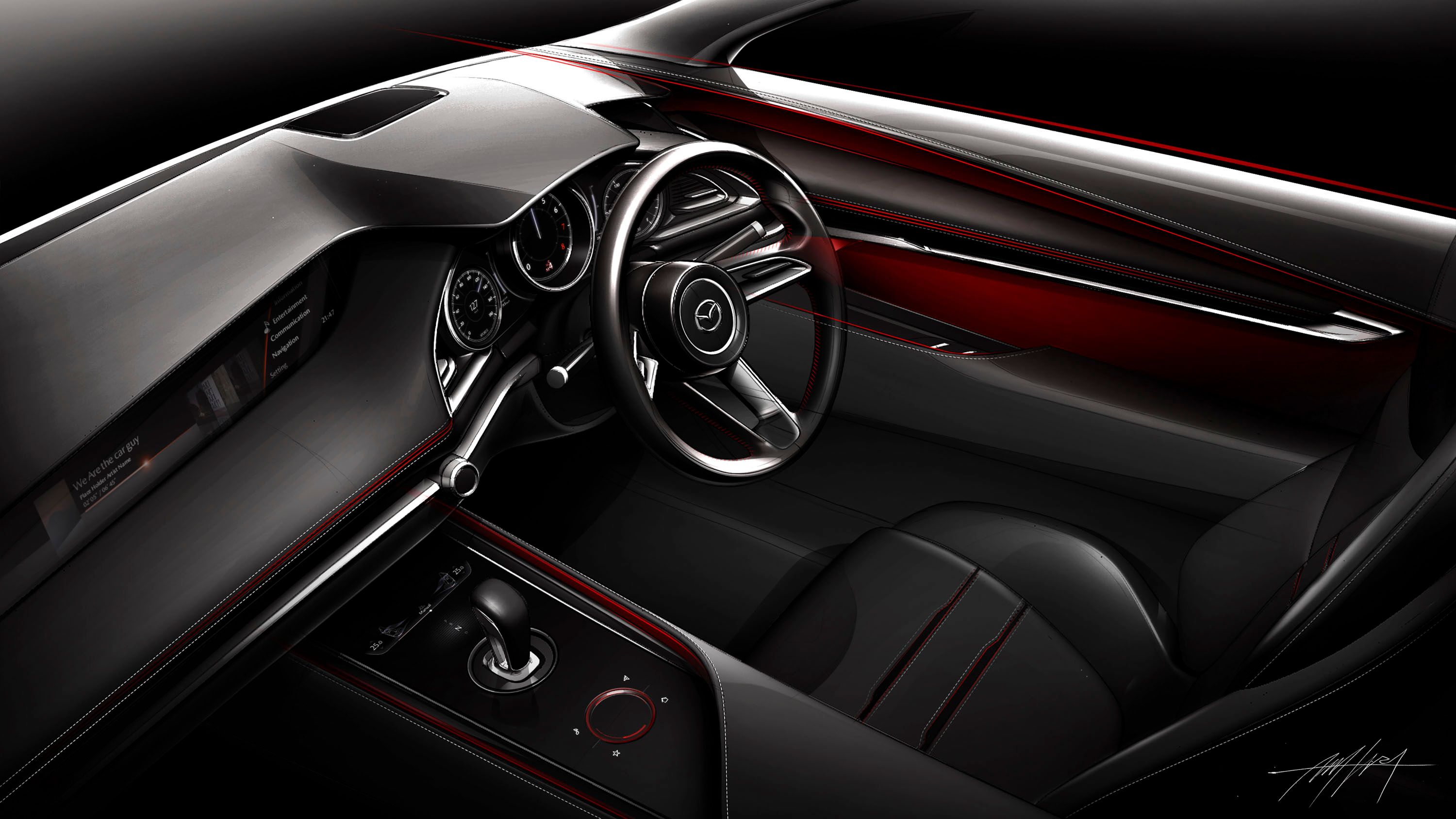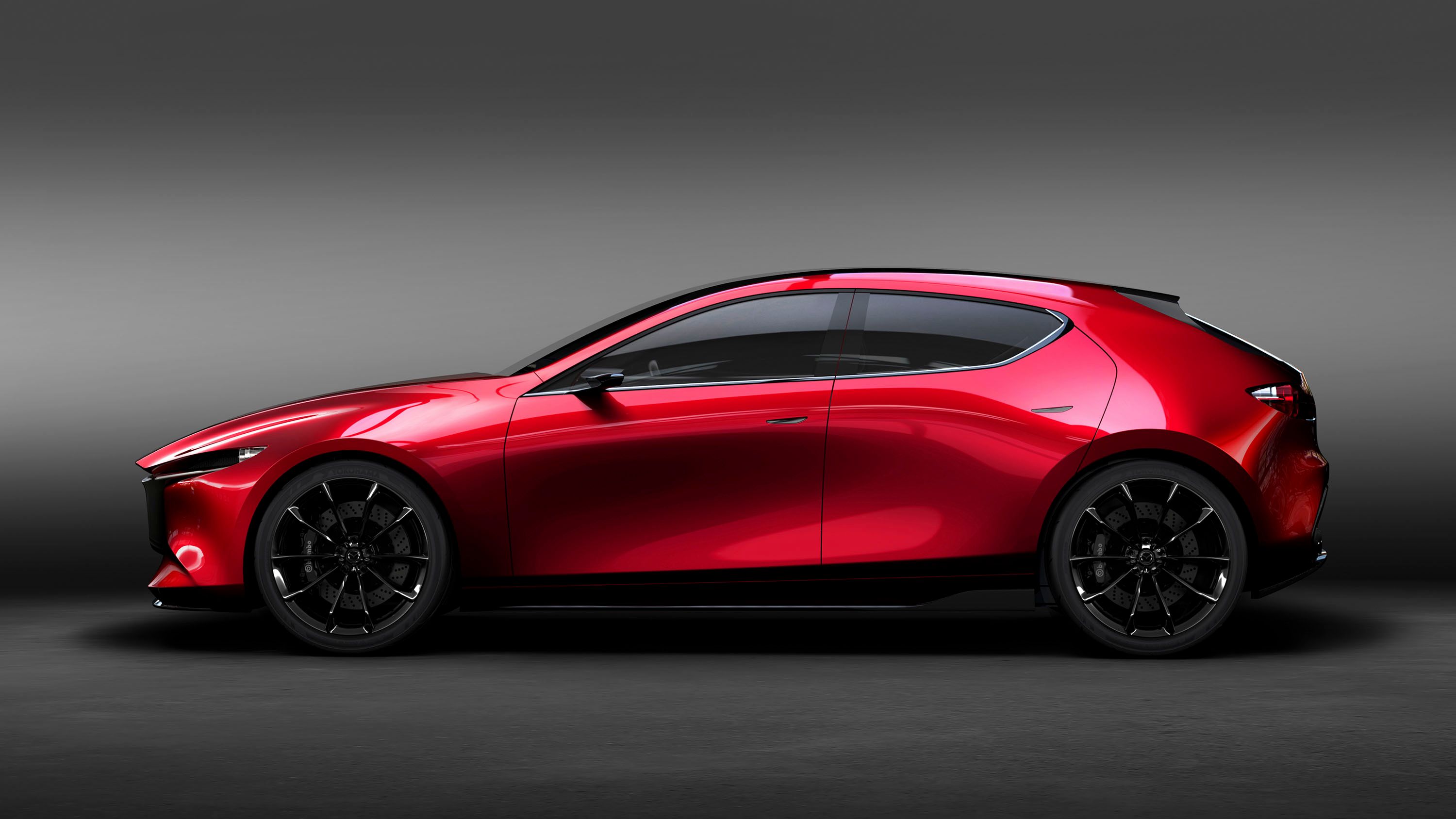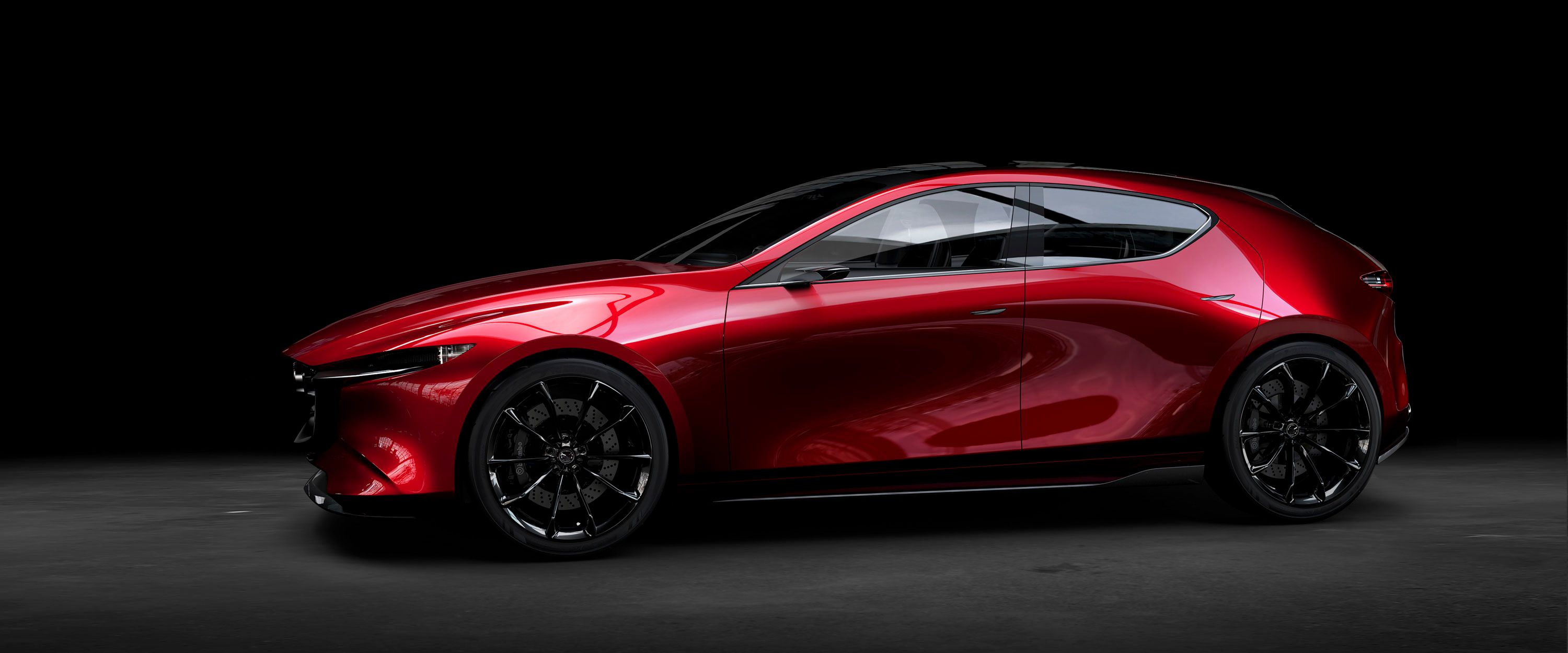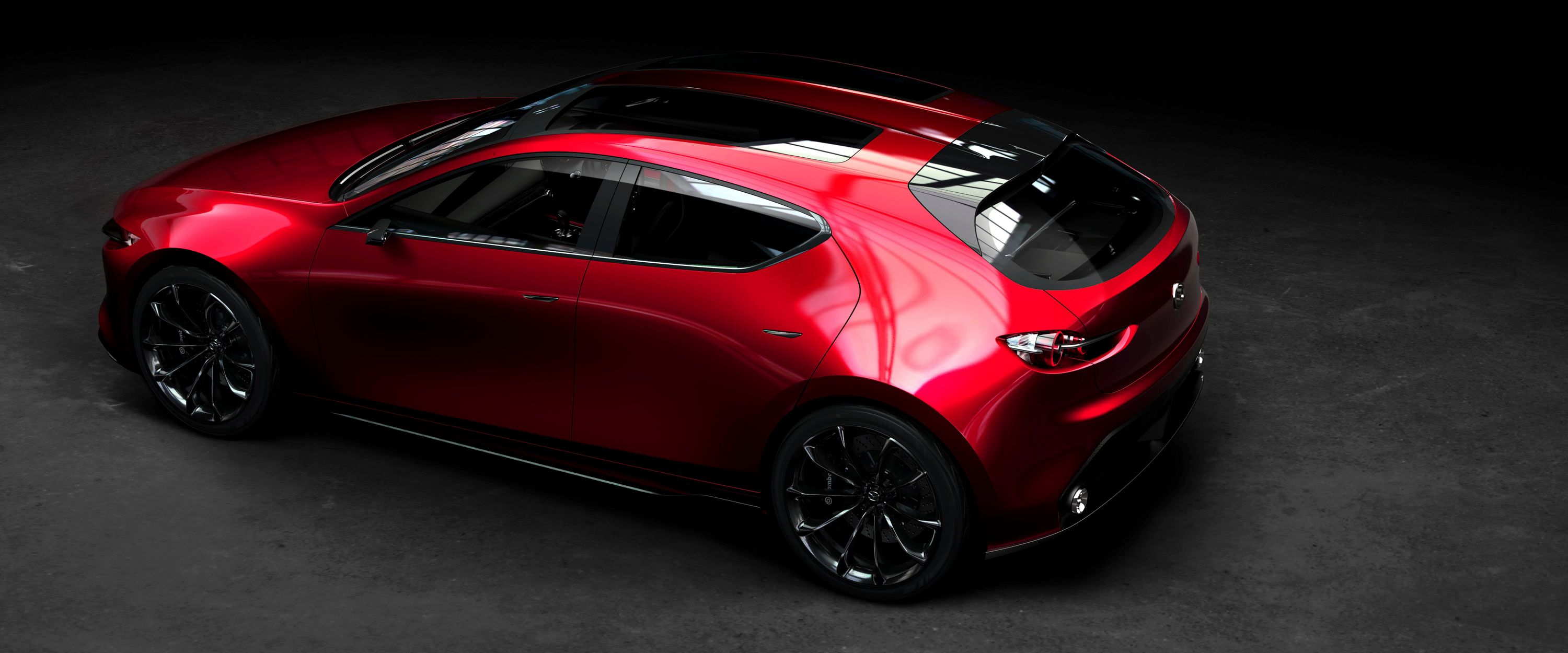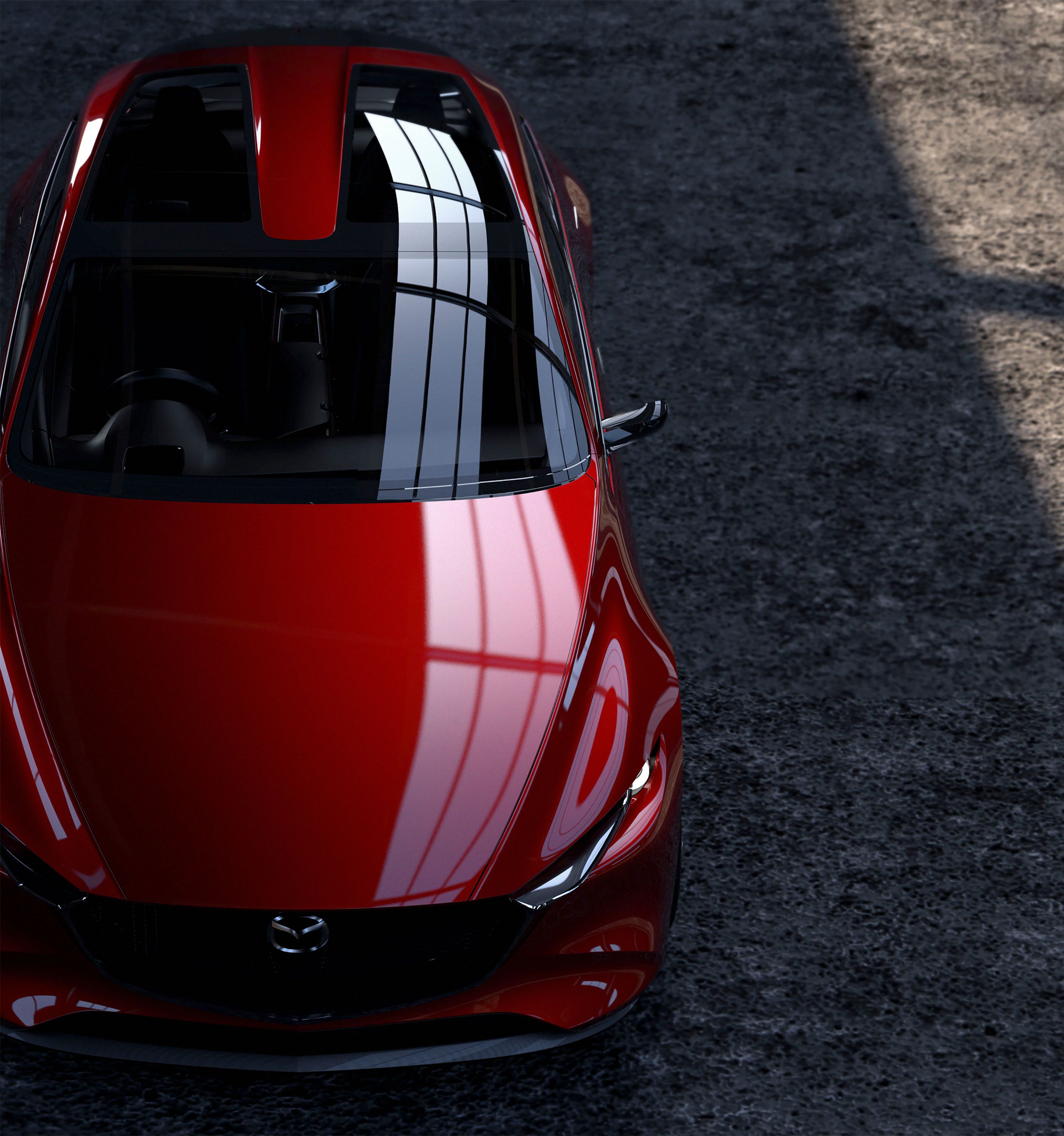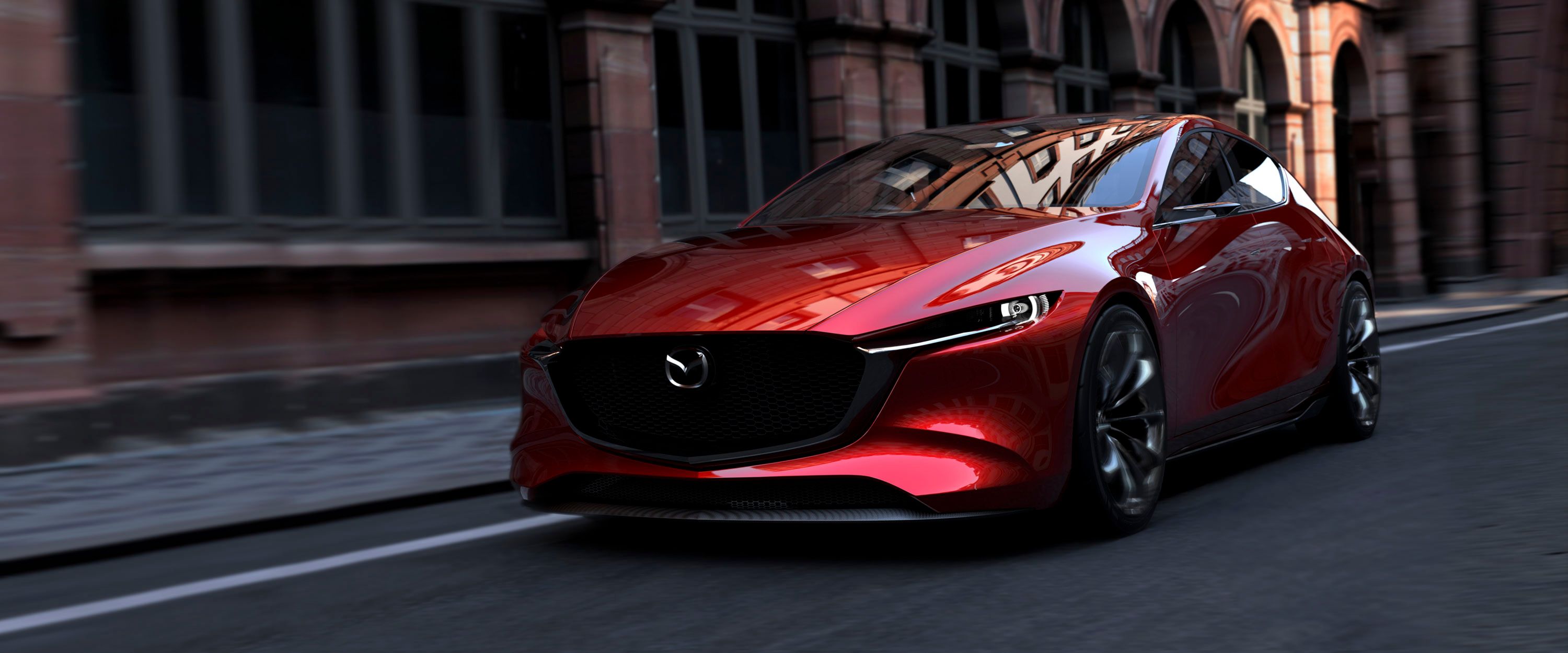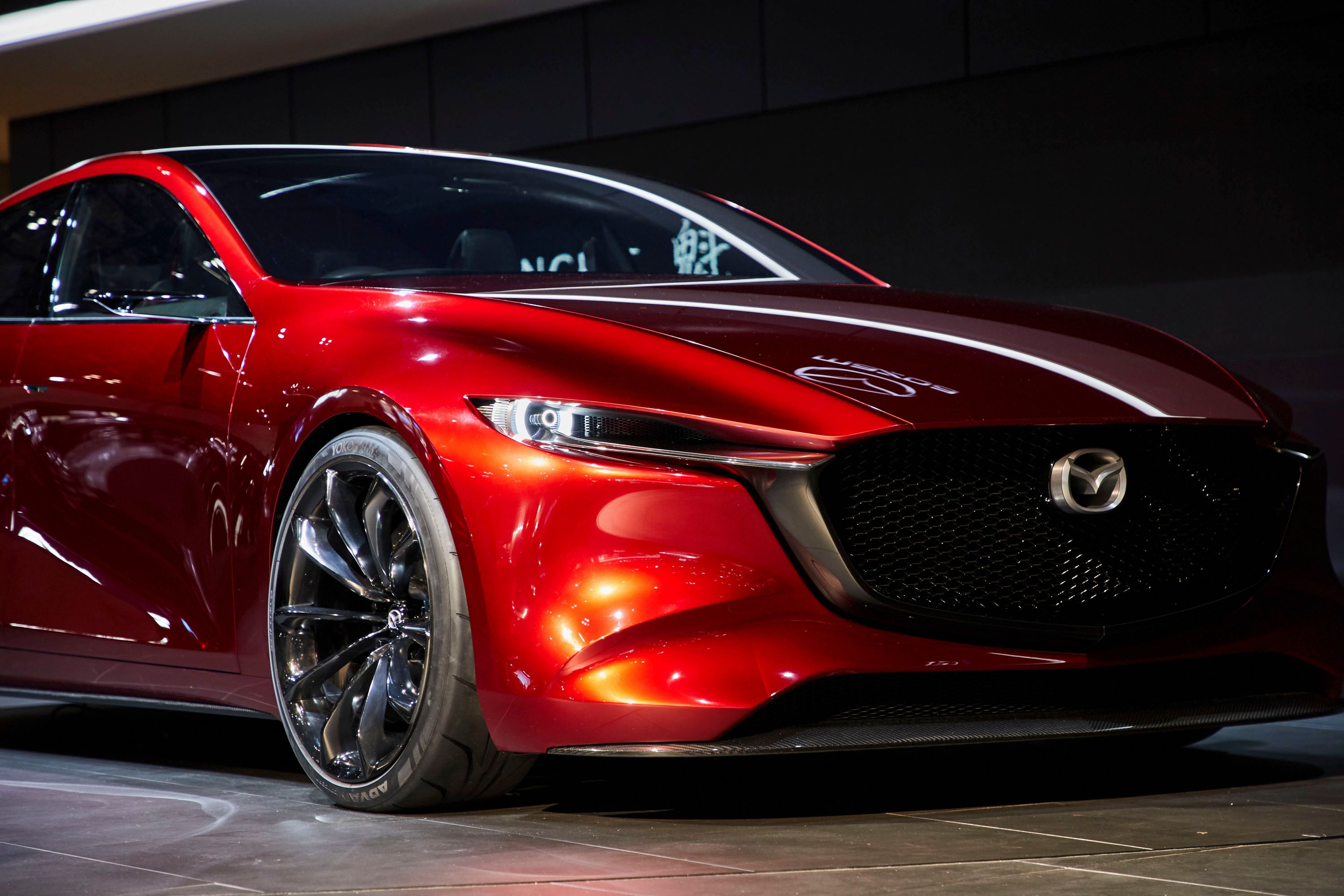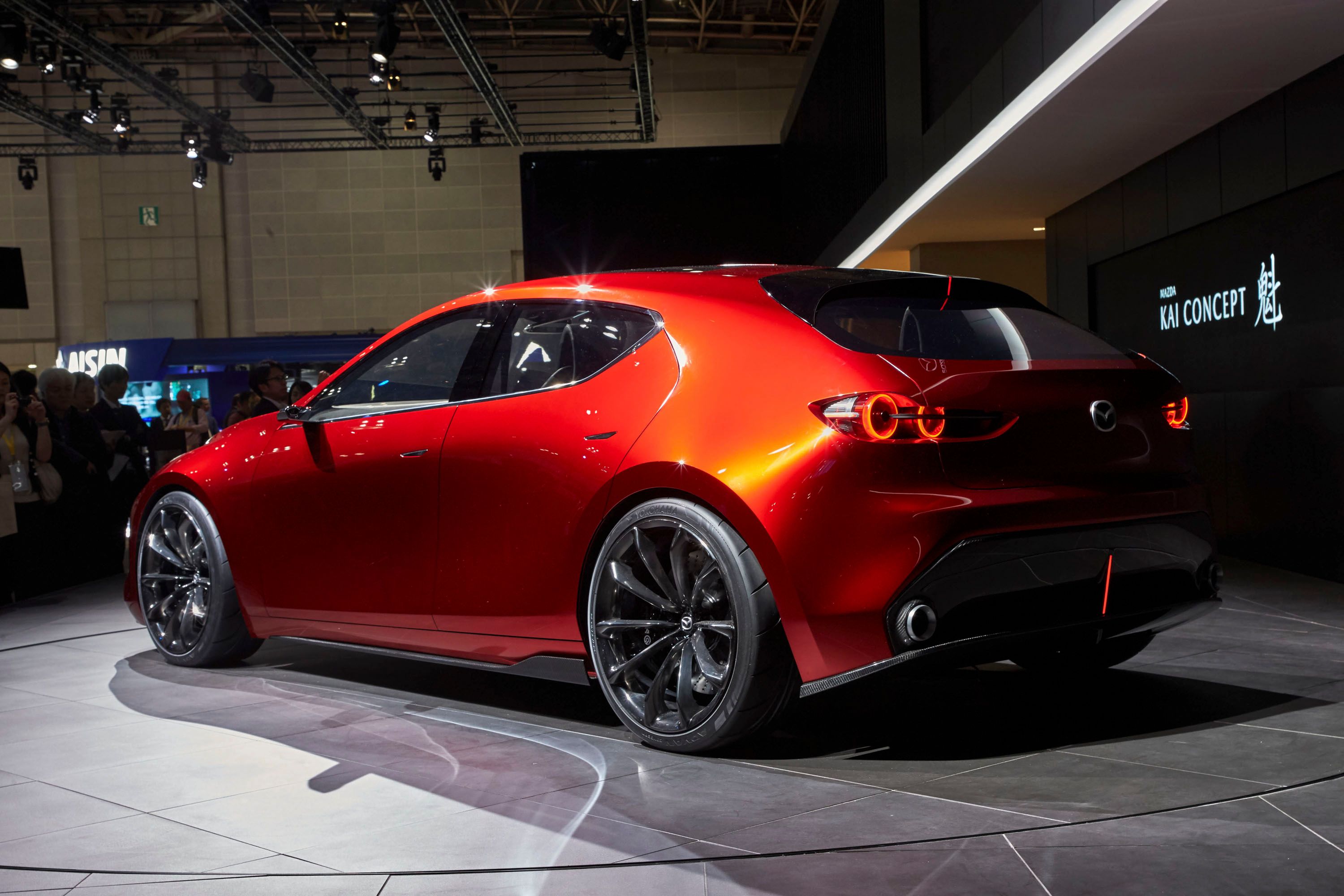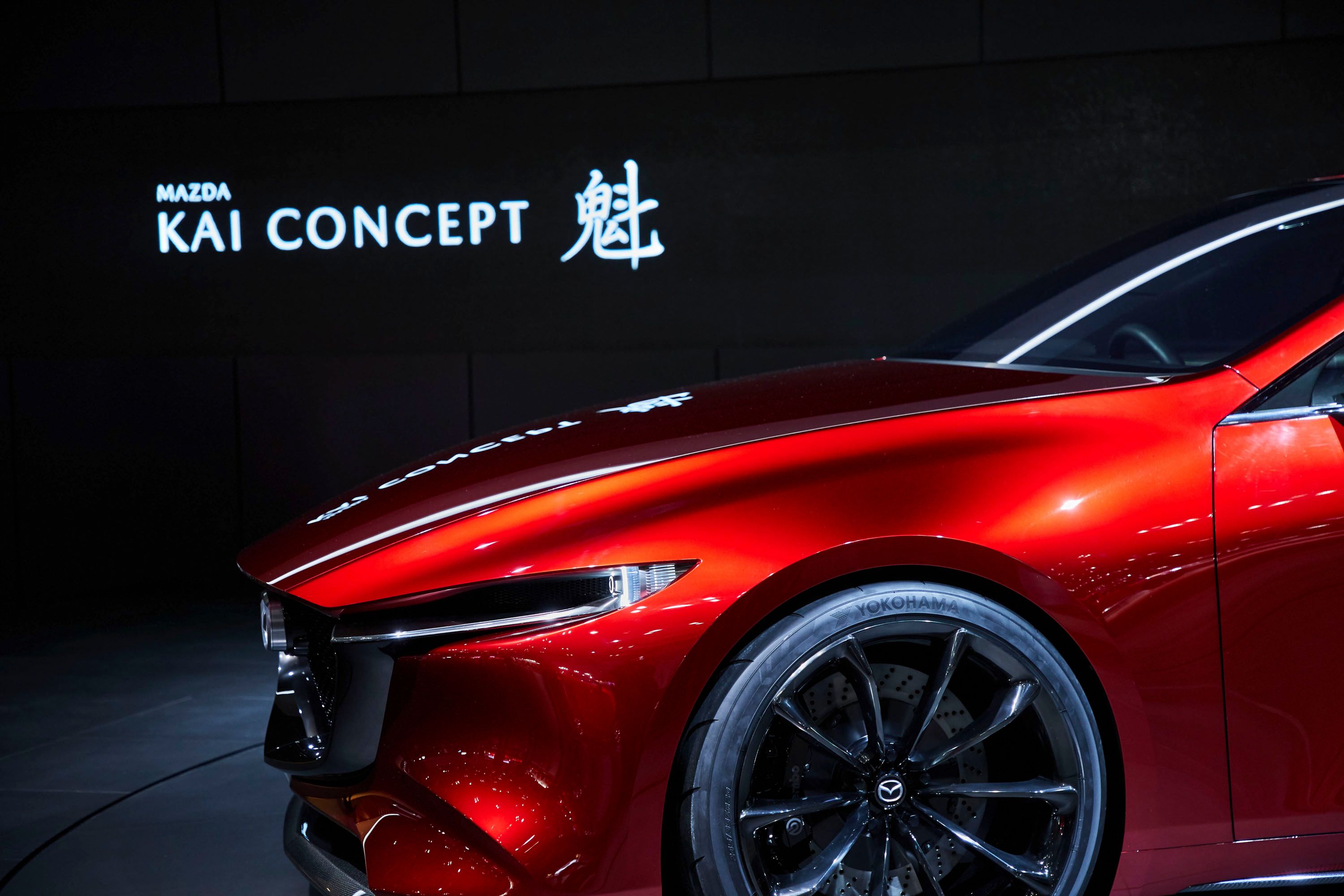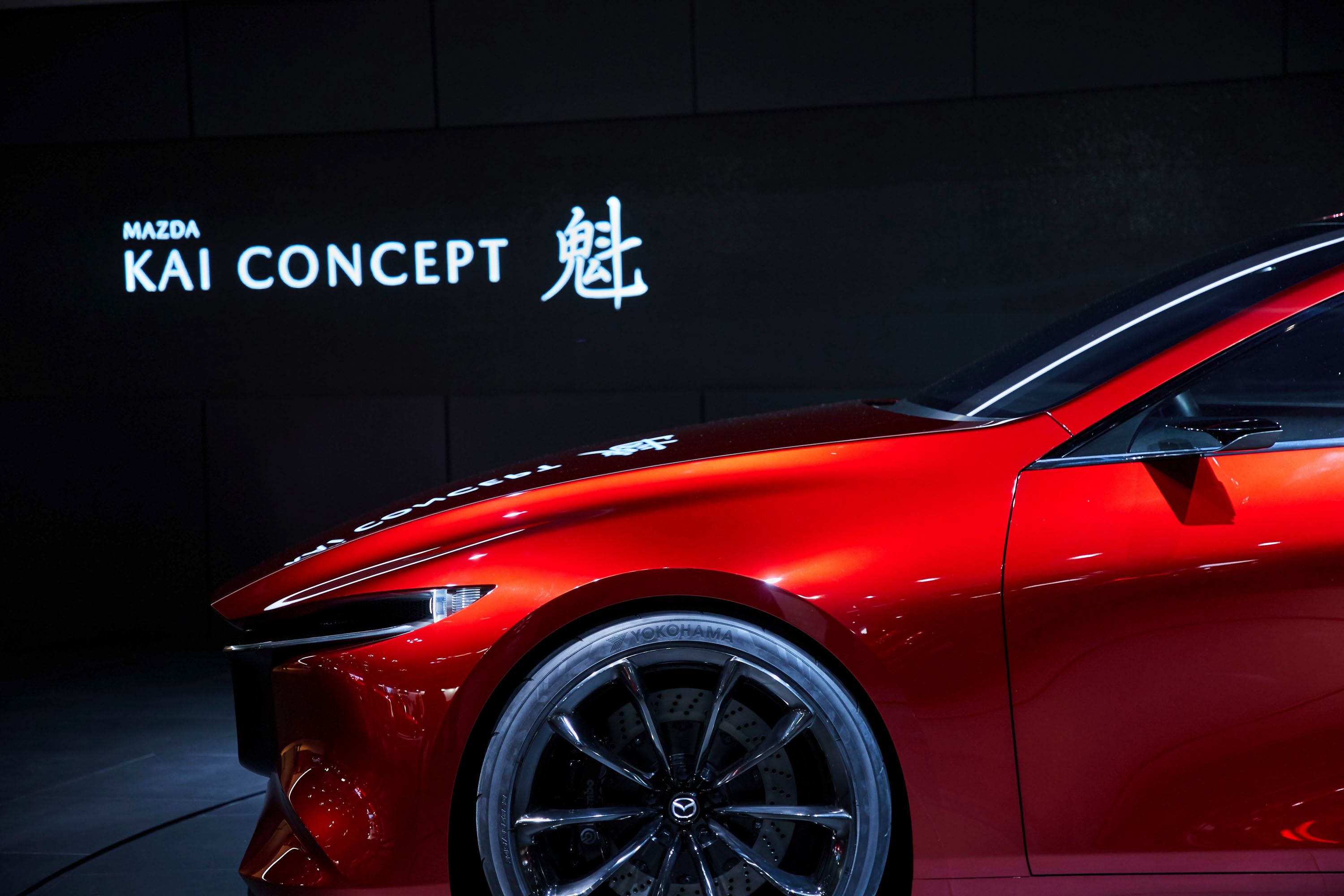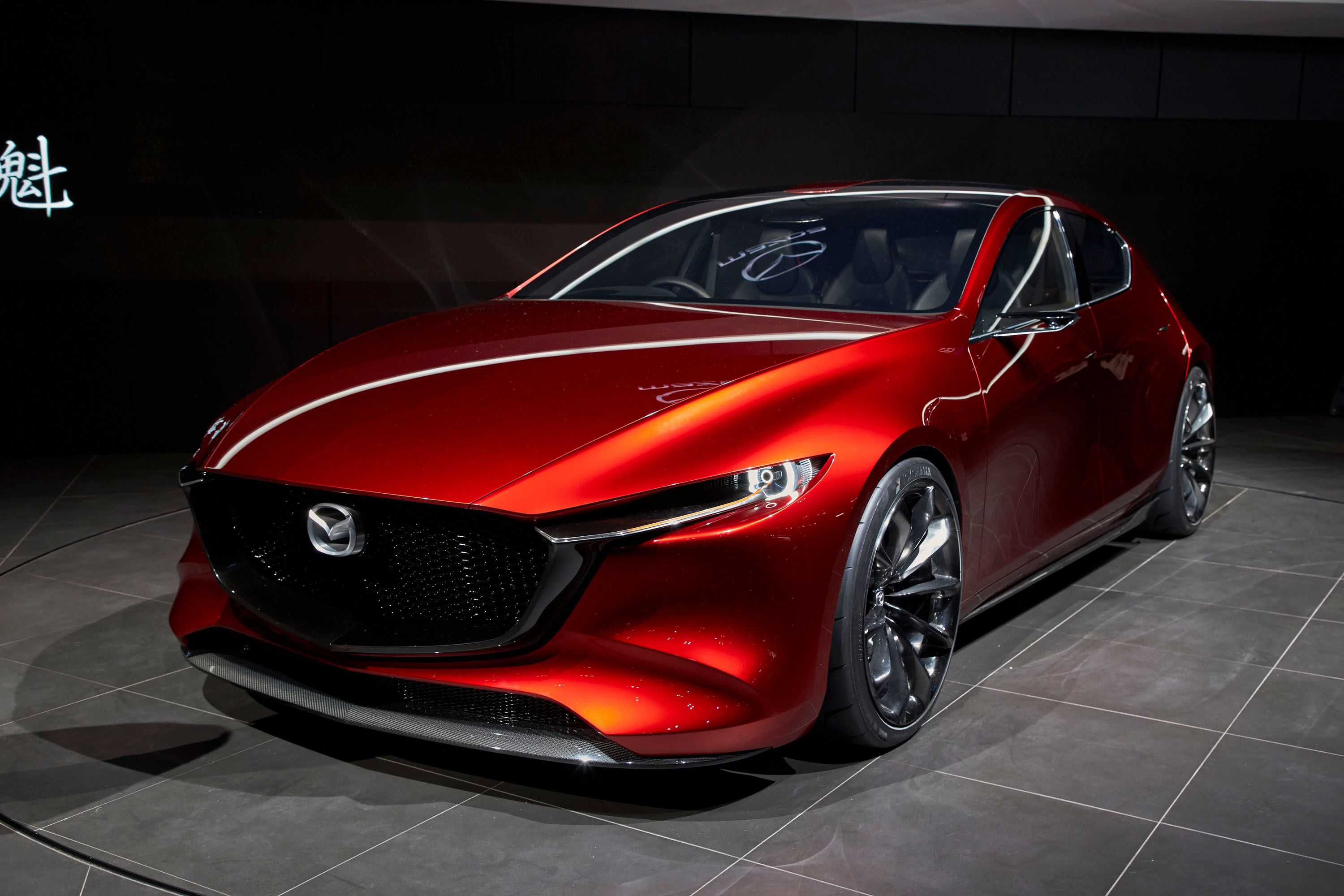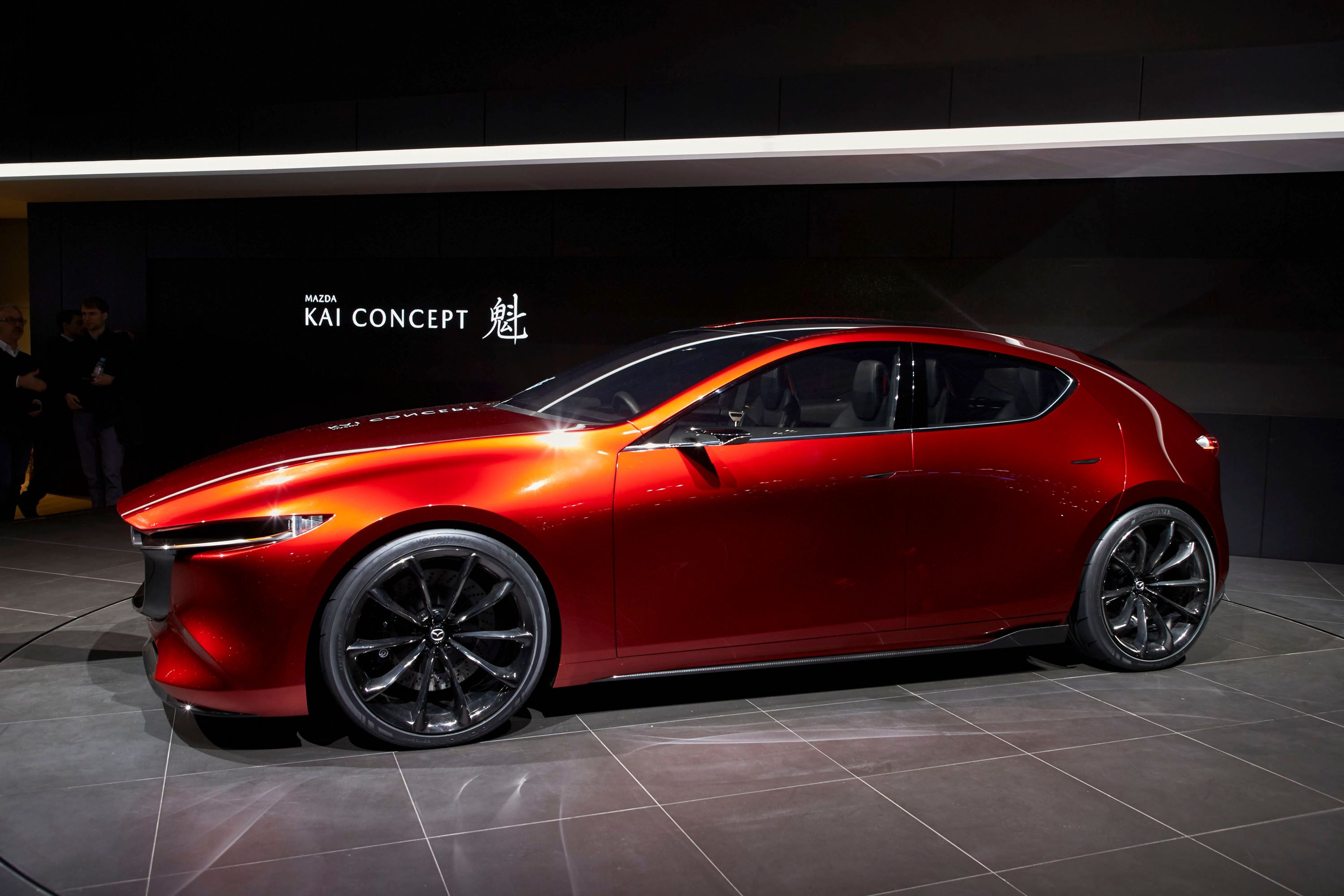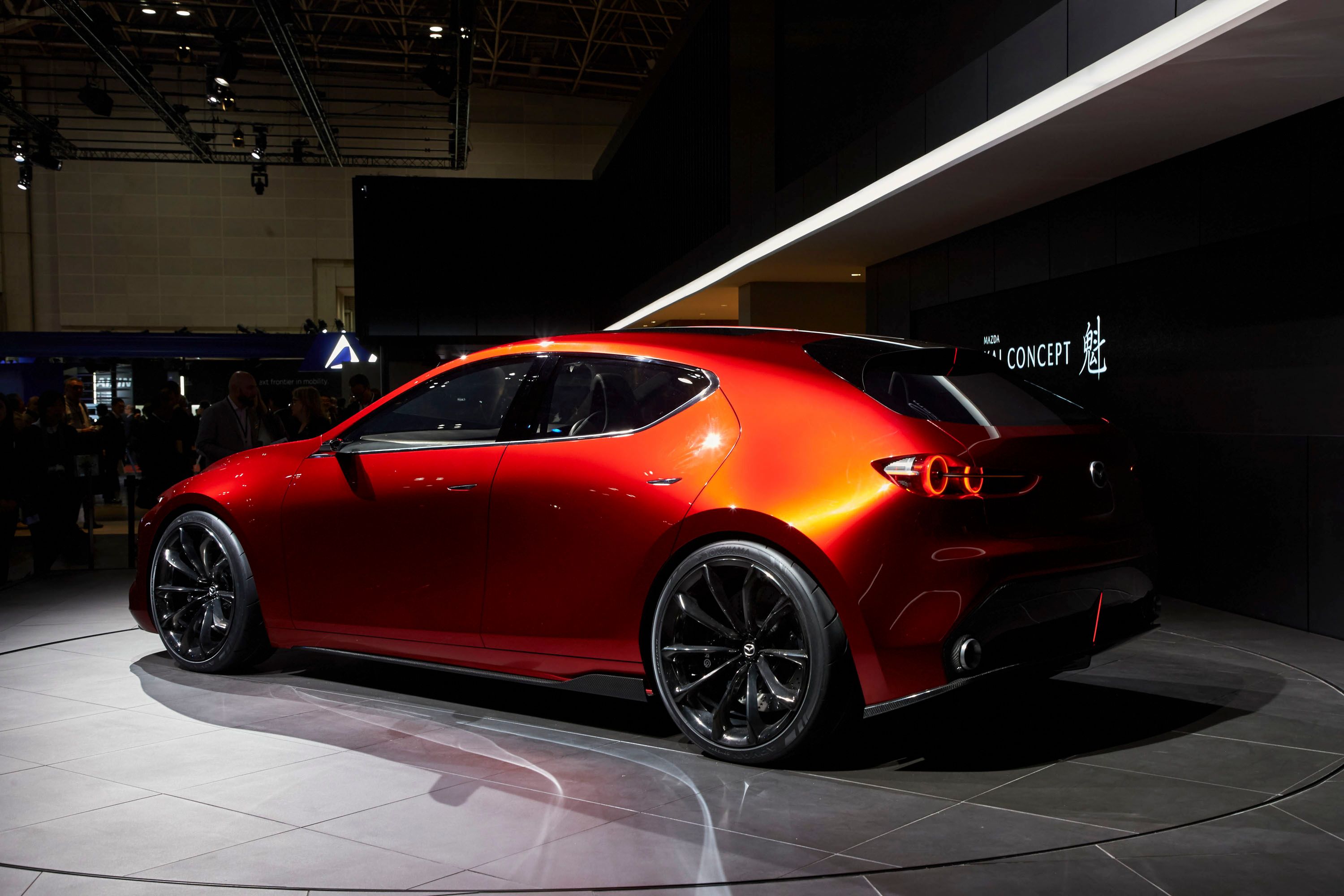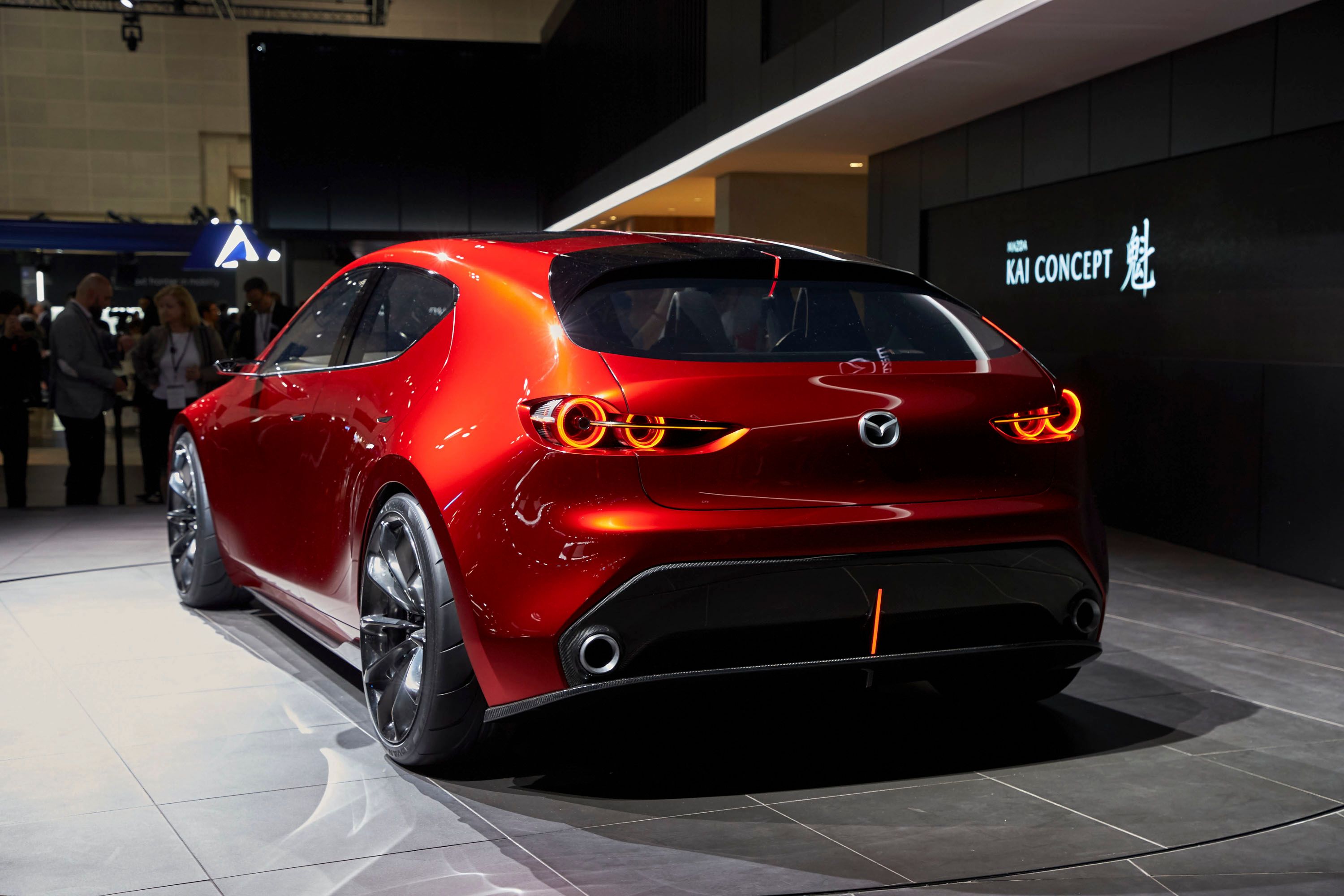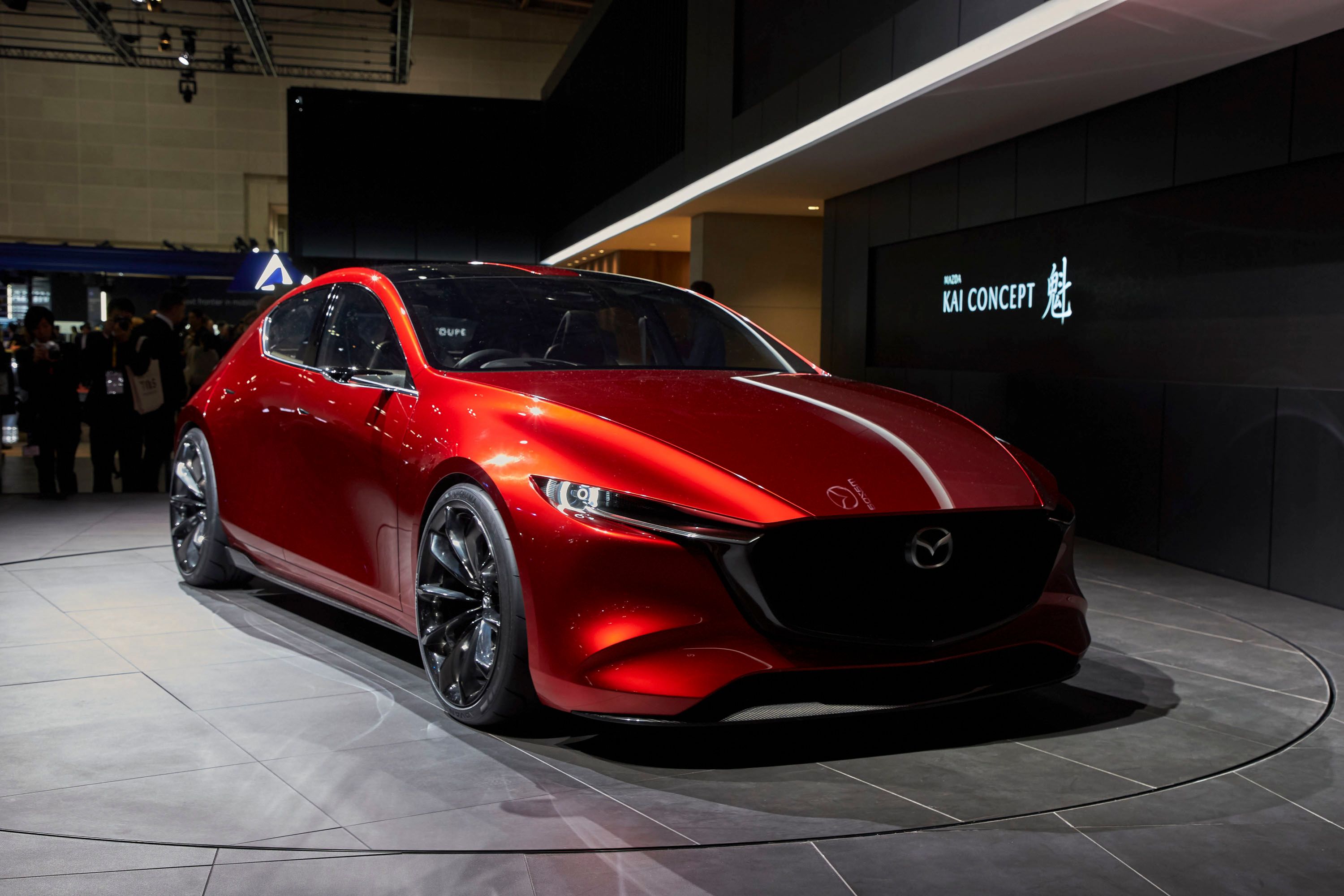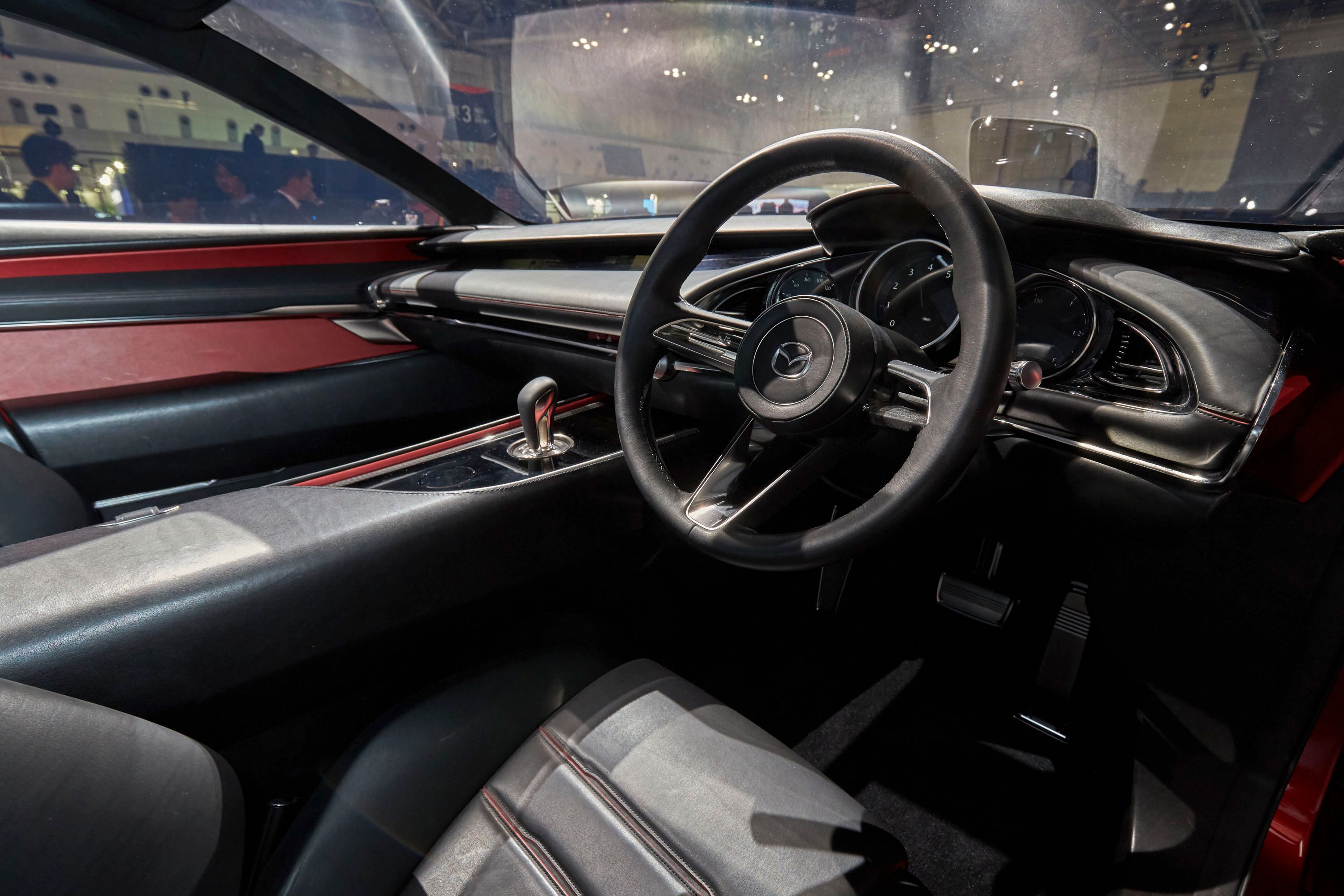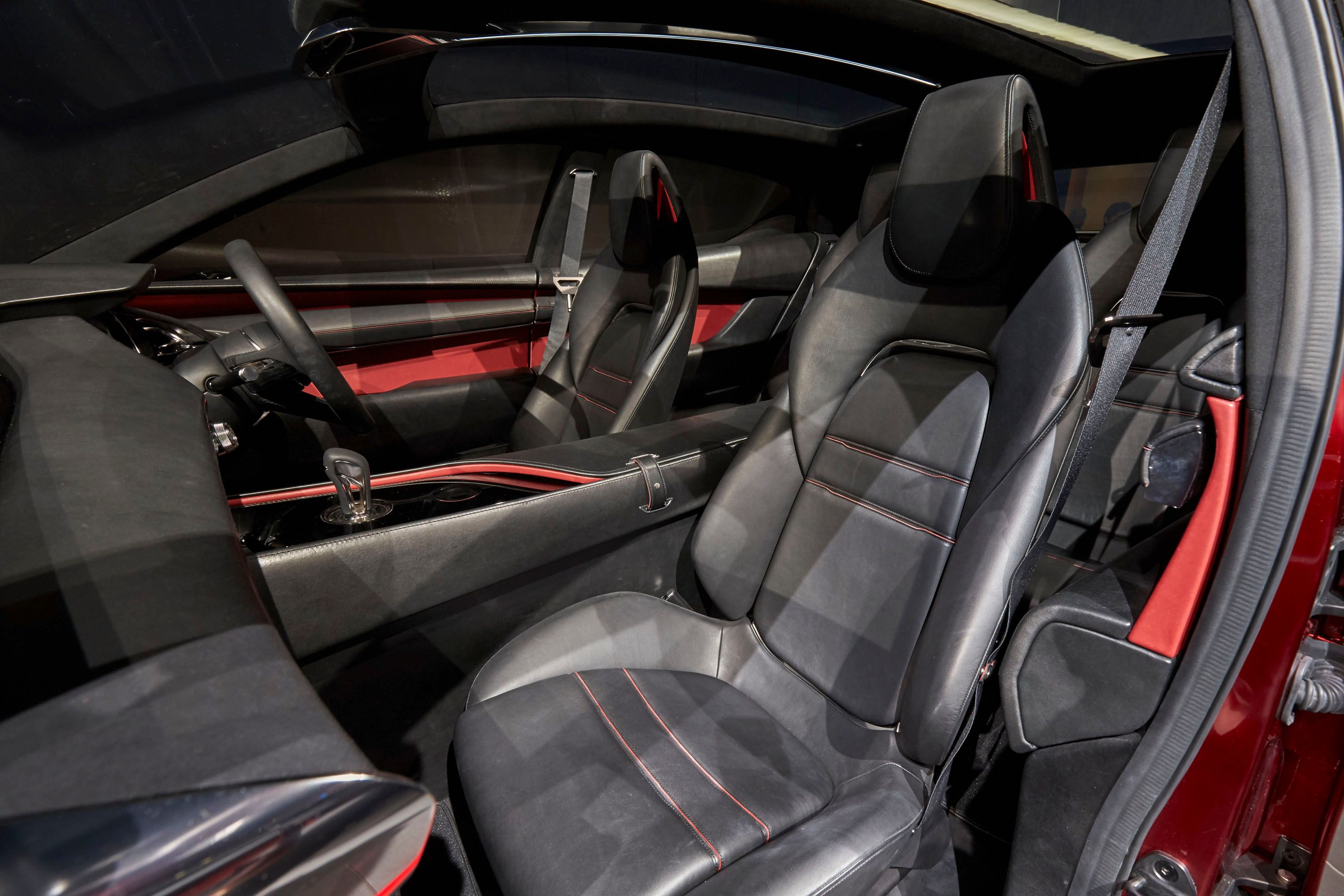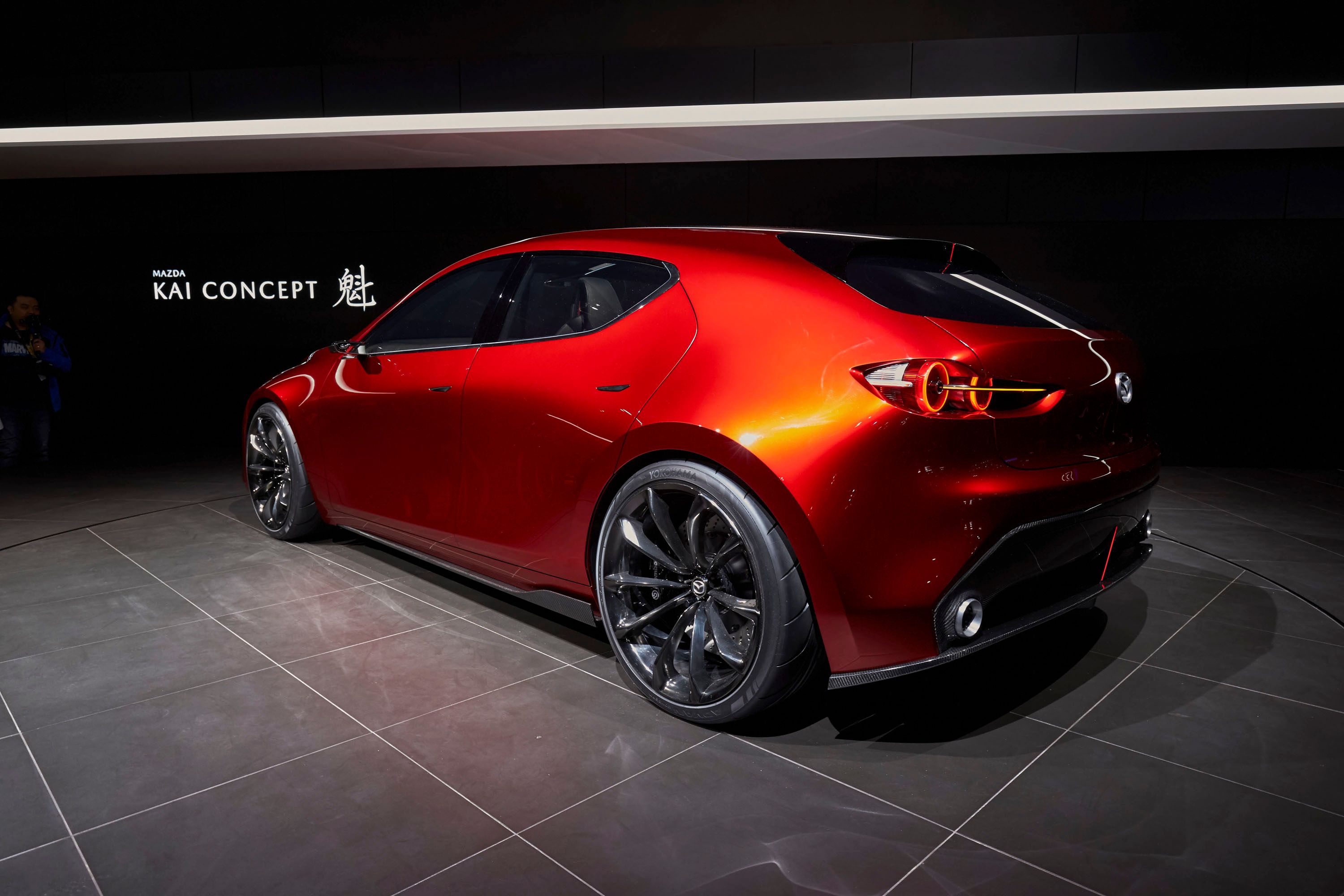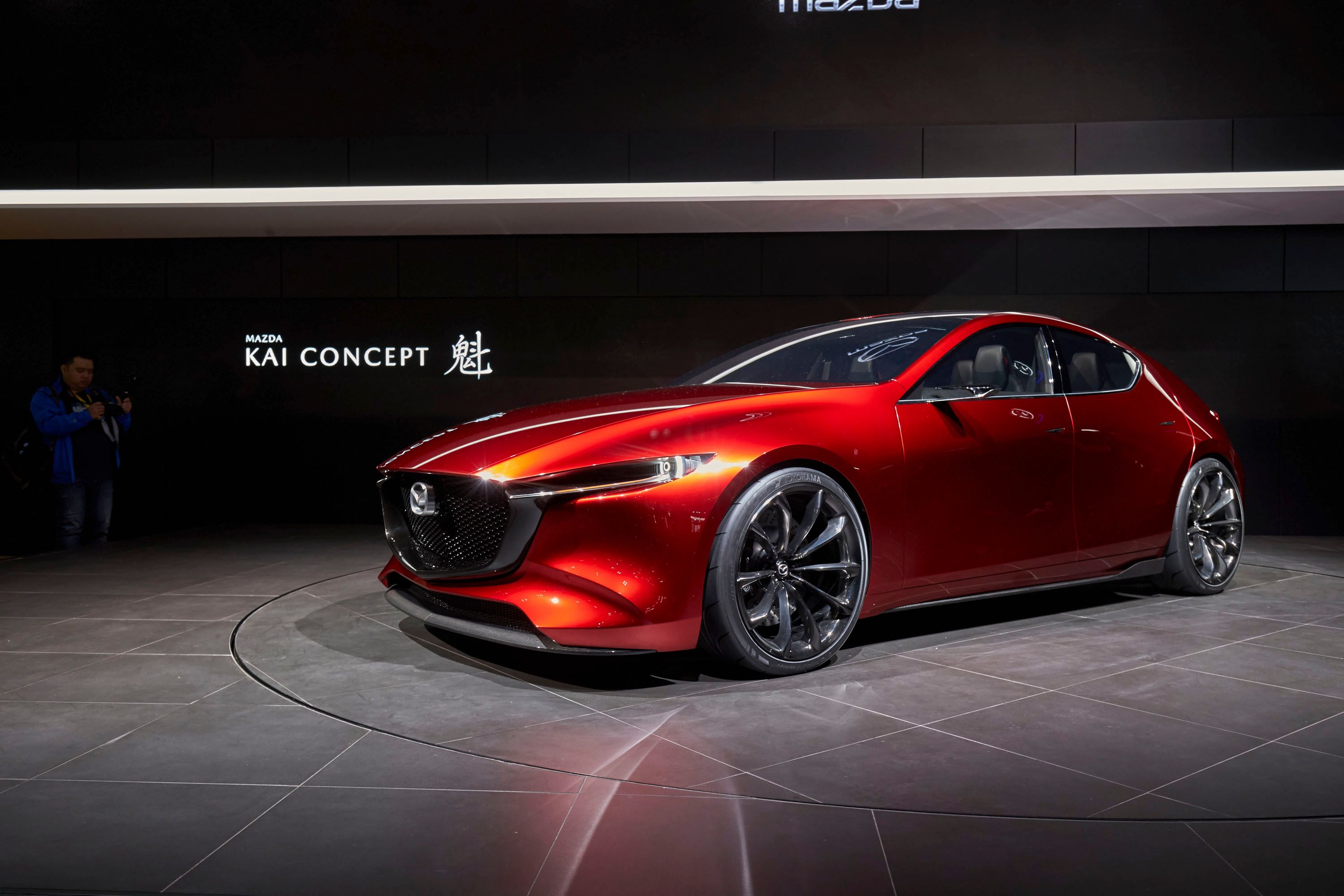Welcome to the future! Well, we’re not there quite yet, but the Mazda Kai Concept is essentially a quick look into the crystal ball that exposes the future of Mazda vehicles. Unlike Mazda’s “Vision” concept at this year’s Tokyo Motor Show, the Kai is something that Mazda could actually make some in the near future. It could even possibly represent the next-gen Mazda3 hatchback – a model that will be due for replacement in the next three to four years anyway. So, what does it bring to the table? Try stunning looks, aggressive lines, sleek curves, and the SkyActiv-X powertrain that’s expected to propel the Mazda brand into the next decade. Meanwhile, the interior gets a toned down look with accents in just the right places, a display screen that’s as wide as the day is long, and a cabin that emphasizes space as much as it does the car’s sporty prowess.
So, will Mazda turn this into the next-gen Mazda3 Hatch? Well, it’s certainly too early to tell since the third-gen model was just revamped for the 2017 model year. So, by the time 2020 get here, we could see a production prototype of that bad boy tearing up the streets with the usual pre-production camo and cloud of mystery floating above it. But, until that happens, let’s take a closer look at this concept, talk some more about it, and speculate a bit about what it could become in the future.
Continue reading to learn more about the Mazda Kai Concept.
2017 Mazda Kai
- Make: Array
- Model: 2017 Mazda Kai
- Horsepower: 200
- Torque: 230
- [do not use] Vehicle Model: Array
Mazda Press Conference at the 2017 Tokyo Motor Show
Exterior
Violent, mean, aggressive, intense, rampant, raging, wild, and frenzied – these words, among others, could all be used to describe the exterior design of the Mazda Kai Concept. The lines just seem to flow in a way that most automakers can seem to match. Take a look at the bottom of the A-pillars then look at how the hood line runs toward the nose, tilting in ever so slightly to make the hood narrower up front. Without a frame below, the hood and inner points of the fenders come together to create a bit of an overhang that shadows the chrome Mazda emblem positioned in the top-center of that recessed, black honeycomb grille. The design of the headlights, which appear to be LED units, flow seamlessly into the gloss black bezel that surrounds the sides and lower edge of the grille, coming to a point right in the center that matches that of the front fascia. Speaking of the fascia, notice how those long fenders seem to seamlessly blend in with the fascia? That’s what you call attractive from any angle.
The fascia itself features those stout lines in the corners that are put in the place most manufacturers would have dumped some fake vents to keep up with the Jones’ while the air dam below runs nearly the full width of the fascia but maintains a low profile despite the overwhelming style of the car itself. Finally, the lip running across the bottom of the fascia is a hit that some down pressure is needed and gives us hope that this little four-door hatch could provide some decent performance More about that later, though.
As you move along to the side, it becomes evident that Mazda took its time when it came to design and made it a point to put an emphasis and excessively tight clearance for not only the body panel but the doors as well. If this thing drove by you at 50 mph, you wouldn’t even be able to tell that it has doors. Of course, the lack of traditional door handles does help that a bit, as do those side view cameras. On the other hand, there are three features to the side profile that make this car so attractive. The first is those excessively long fenders that seem to run on forever. The second is the sheer smoothness of the side profile with its somewhat bubbly nature, while the third is the waistline that rides just north of parallel to the road and takes a sharp turn upward near the end of the rear doors. Down below the side skirts are accented by a small lip that curves upward just ahead of the rear wheel to create a little wingtip of sorts.
Looking at the Kai concept from the rear end and you can actually notice (and absorb) the fact that this thing has some very flared wheel arches. They aren’t all that noticeable from the front or side view, but from the rear, they are so flared that they the car actually has a smooth but muscular appearance to it. Meanwhile, the bubbly appearance continues around back but is toned down a bit thanks to the dramatic cutout for the headlights that feature circular LEDs recessed into the body. The Mazda emblem sits all by its lonesome in the center of the hatch and the little lip just below it makes the rear hatch look a little wider than it really is. It should also be pointed out that the “rear fascia” is part of the body shell. Now, this does make for a cleaner look, no doubt, but it poses a problem should this model shift into production as it could lead to some expensive repair bills or even a total vehicle loss after even a minor rear-end collision.
Outside of this, the rear hatch is actually a bit wider up top where the rear windscreen is, and that little overhang holds tight to the top of the rear hatch. The bottom of the “fascia” gets a massive, flat-black insert with a black-hole-like opening along the bottom that runs almost the full width, being flanked but the circular exhaust outlet on each side. At the bottom, another lip is in place to level things out and tie the front and sides together in full harmony. The last thing I want to point out is the rood actually has two glass panels that for a T-top like-look, with the center portion of the roof getting two very sharp boy lines that provide some serious style if you happen to be looking down on this sexy little hatch.
Interior
The interior of the Kai is just as intriguing as the exterior. There is a sporty appearance while the smooth, elegant lines provide a feeling of length and dominance. The seats sit far to the rear of the cabin, ultimately creating a legroom problem for those in the rear, but plenty of space for those up front. The dash has a two-tier look to it with a thin pad up top that overhangs along the full width of the dash with a longer overhang above the instrument cluster. The second tier sits lower and is widely smooth – a feature that helps the cabin feel wider than it really is. A long, thin screen sits between the upper dash bad and the lower, serving as a home for the infotainment system that looks to be more accessible to the passenger than the driver until you look at the center console and notice the circular touchback to the rear of the shifter.
Sitting below the dash is the HVAC console that appears to include the vents and control. The HVAC controller itself is fully digital, however, there is one number in the corner closest to the driver. The center console sits high between the rear seats, something that gives the car a real sports car feel and is certainly rivaled only by the Kia Stinger at this point in time. The face of the center console is recessed a bit and is either black glass or very glossy plastic. The gear shifter sits about in the middle and looks to be a spring-loaded unit that allows for a slapstick-like driving experience. Red accents make up the walls above the console face and match those accents on the door trim panels. The seats are upholstered in the blackest of black.
The view of the driver includes a three-gauge cluster that would be quite nice as a digital unit but appears to be analog in nature. The steering column is short, much like the levels coming off the column while the steering wheel has thin spokes and a smaller central hub, giving the wheel a classic feel even with the chrome inserts and leather wrapping. The questions I’m left with are where do the side view cameras display their images and how much passenger and cargo room does this thing really have in the rear. The answer for the former is likely the rearview mirror, which could also be an all-digital unit and display a picture from the rear facing cabin out back. As for the passenger and cargo room, well, that’s like asking how many licks it takes to get to the center of a tootsie pop: the world may never know.
Drivetrain
Mazda didn’t say very much about either of the new concepts that it brought to Tokyo, but we know that the Kai is powered by the new SkyActiv-X powerplant that will find its way into production cars as soon as the 2019 model year, with the Mazda3 hatchback being the most likely candidate for its initial introduction. For now, very little is known about the SkyActiv-X, but we do know that it uses a spark-assisted compression ignition system. This works by using very high compression to combust the gasoline-air mixture inside each cylinder. It works the same way a diesel engine fires, however, gasoline requires much higher compression rates and, as such, doesn’t work quite as well at all engine loads and temperatures, which is why you need the spark plug for the occasional assist. The engine itself is a 2.0-liter four-banger and should be able to deliver some 200 horsepower or maybe a little more. According to Mazda, it can deliver 10 to 30 percent more torque than the current SkyActive engines in use today while being 20 to 30 percent more efficient.
It really does sound promising, but test drives of vehicles fitted with pre-production versions yielded conditions such as spark knock – which was said by Mazda to be “normal” as well as some sluggishness at certain engine speeds like the engine was struggling to determine exactly when to use spark assist and when not to. Almost like it was experiencing a pre-ignition sort of situation. Of course, considering this engine is only good for so much horsepower, and there’s no telling what can actually be done to improve power, Mazda has to have a solution to offer even more power down the road. Well, this engine can be paired with a standard transmission or a hybrid unit so that more power could, in theory, be delivered with this engine with a little bit of electric help. On top of that, if the concept will work with four-cylinders it should work with six as well (Mazda hopes, anyway.) The biggest thing is, however, is that purchasing a car using this new type of engine is quite risky – it has no proven track record, no word for reliability, and good luck finding a mechanic that knows how to work on it, even at your local Mazda dealer in the first year or two the engine is in service.
On the plus side, if the technology does prove to be worthy of long-term production, it could help keep the internal combustion engine in play for a long time to come and will give Mazda time to bank up a little cash to do some more R&D on the electrification front – something it wants to push but claims to have limited funds for R&D. For now, you can probably expect this concept to jump to 60 mph in around 6.5 seconds or so, in optimal running conditions, while top speed would probably be around 140 mph based solely on an educated guess that the engine will produce somewhere around 200 horsepower an 230 pound-feet of torque.
Conclusion
When I first looked into Mazda today, the first thing I saw was the Vision Concept, and I have to say, I wasn’t impressed. I thought it looked a lot like the Mercedes-Maybach6 Concept with some different lines. Of course, it could also show Mazda’s intent to take the plunge into more luxurious territory, but we’ll leave that conversation for another day. In the end, I browsed past that Vision concept and took a good hard look at the Kai, and I said (Yes, I actually said it out loud to myself,) “that’s the future Mazda3 Hatchback right there. Whether or not it will be the fourth-gen model remains to be seen, as we’ve already seen prototypes on the road and they look nothing like this, but it could very well represent a future version of the car. We can at least hope anyway, right? For now, there’s not much else to say about this concept except that it has all the right credentials to become a production model so hopefully Mazda won’t leave this concept lost in time past. What do you guys think? Would you roll a hatchback like looks like this baby? Let us know in the comments section below.
References
Mazda3
Read our full speculative review on the 2019 Mazda3.
Read more Tokyo Motor Show news.

